ЩҒШұЩ… ШҜЩҲЫҢШҜЩҶ Ш®ЩҲШҜ ШұШ§ Ш§ШІ Щ…Ш№Щ…ЩҲЩ„ЫҢ ШЁЩҮ Ш№Ш§Щ„ЫҢ ШЁШұШіШ§ЩҶЫҢШҜ
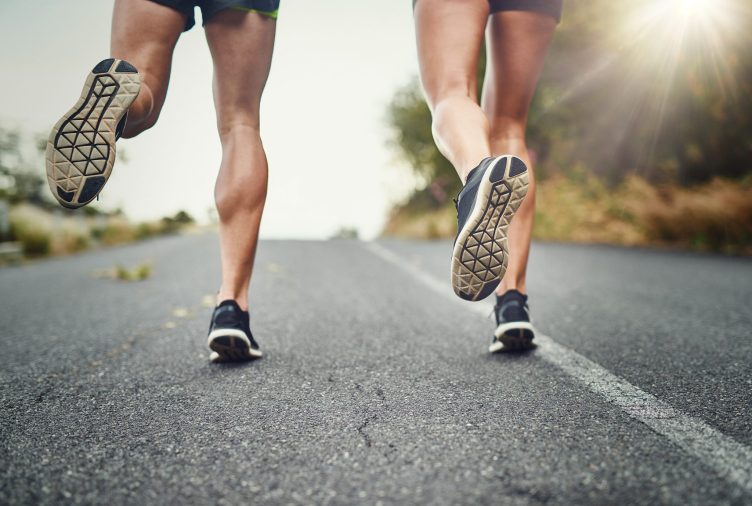
ШЁШұШ§ЫҢ Ш§ЫҢЩҶЪ©ЩҮ ШұШ§ШӯШӘвҖҢШӘШұ ШЁШҜЩҲЫҢШҜ ЩҲ Ъ©Щ…ШӘШұ ШЁЩҮ Ш№Ш¶Щ„Ш§ШӘШӘШ§ЩҶ ЩҒШҙШ§Шұ ШЁЫҢШ§ЩҲШұЫҢШҜШҢ ЩҒШұЩ… ШҜЩҲЫҢШҜЩҶ ЩҮЩ…ЫҢШҙЪҜЫҢ Ш®ЩҲШҜ ШұШ§ ШЁЩҮ ШҜЩӮШӘ ШӘЩҶШёЫҢЩ… Ъ©ЩҶЫҢШҜ.
ШҜШұ Ш§ШҜШ§Щ…ЩҮ ЩӮШҜЩ… ШЁЩҮ ЩӮШҜЩ… ШЁЩҮ Ш§ЫҢЩҶ Щ…ЩҲШ¶ЩҲШ№ Щ…ЫҢвҖҢЩҫШұШҜШ§ШІЫҢЩ….
ЩҶШіШ®ЩҮ Ш§ЫҢЩҶШіШӘШ§ЪҜШұШ§Щ…ЫҢ:
ШҙЩ…Ш§ ШҜШұ ШӯШ§Щ„ ШҜЩҲЫҢШҜЩҶ ШҜШұ ЫҢЪ© Щ…ШіЫҢШұ ШЁШ§ШҙЪ©ЩҲЩҮ ШҜШұ Щ…ЫҢШ§ЩҶ Ш¬ЩҶЪҜЩ„ ЩҮШіШӘЫҢШҜШҢ Щ…ЩҲЩҮШ§ЫҢШӘШ§ЩҶ ШЁЩҮ ЩҶШұЩ…ЫҢ ШҜШұ ЩҶШіЫҢЩ… ШӘЪ©Ш§ЩҶ Щ…ЫҢвҖҢШ®ЩҲШұШҜШҢ ШЁШҜЩҶШӘШ§ЩҶ ШЁШ§ ШёШұШ§ЩҒШӘ ШҜШұ ЩҮЩҲШ§ ШӯШұЪ©ШӘ Щ…ЫҢвҖҢЪ©ЩҶШҜШҢ ЪҜШ§Щ…ЩҮШ§ЫҢШӘШ§ЩҶ ЩҶШұЩ…ШҢ ШӘЩҶШҜ ЩҲ ШӘЫҢШІ Щ…Ш§ЩҶЩҶШҜ ШәШІШ§Щ„ Ш§ШіШӘ.
ШҜШұ ЩҲШ§ЩӮШ№ЫҢШӘ:
Щ…Ш«Щ„ ЩҒЫҢШЁЫҢ ШЁЩҲЩҒЩҗЫҢ ШҜШұ ШўЩҶ ЩӮШіЩ…ШӘ Ш§ШІ ШіШұЫҢШ§Щ„ ЩҒШұЩҶШҜШұШІ Ъ©ЩҮ ШұЫҢЪҶЩ„ ШұШ§ ШЁШ§ ЩҒШұЩ… Ш№Ш¬ЫҢШЁвҖҢШәШұЫҢШЁ ШҜЩҲЫҢШҜЩҶШҙ Ш®Ш¬Ш§Щ„ШӘ ШІШҜЩҮ Щ…ЫҢвҖҢЪ©ЩҶШҜШҢ ШҙЩ„ЩҶЪҜвҖҢШӘШ®ШӘЩҮ Щ…ЫҢШ§ЩҶШҜШ§ШІЫҢ!
Ш®Ш¬Ш§Щ„ШӘ ЩҶШҜШ§ШұЩҮ. Ъ©ШұЫҢШі ШЁЩҶШӘШҢ Щ…Ш№ШұЩҲЩҒ ШЁЩҮ Ъ©ЩҲЪҶ ШЁЩҶШӘШҢ Щ…ШҜЫҢШұ Ш§ШұШҙШҜ ШЁШ®Шҙ Ш¬ЩҮШ§ЩҶЫҢ ШҜЩҲ ШҜШұ ЩҶШ§ЫҢЪ©ЫҢШҢ Щ…ЫҢвҖҢЪҜЩҲЫҢШҜ: ШұЩҲШҙЫҢ Ъ©ЩҮ ШЁШұШ§ЫҢ ШҜЩҲЫҢШҜЩҶ Ш§ЩҶШӘШ®Ш§ШЁ Щ…ЫҢвҖҢЪ©ЩҶЫҢШҜШҢ ЫҢШ§ ШіШЁЪ© ШҜЩҲЫҢШҜЩҶ ШҙЩ…Ш§ШҢ Щ…ЩҶШӯШөШұ ШЁЩҮ Ш®ЩҲШҜ ШҙЩ…Ш§ШіШӘ.
Ш§ЩҲ Ш§Ш¶Ш§ЩҒЩҮ Щ…ЫҢвҖҢЪ©ЩҶШҜ: В«Ш§ЫҢЩҶЪҜЩҲЩҶЩҮ Ш¶ШұШЁЩҮ ШІШҜЩҶ ЫҢШ§ ШӘЪ©Ш§ЩҶ ШҜШ§ШҜЩҶ ШіШұ ЫҢШ§ Ш®Щ… ШҙШҜЩҶ Ш¬ШІШҰЫҢ ШЁЩҮ ЩҫШҙШӘ ЫҢШ§ ШЁЩ„ЩҶШҜ ЩҶЪ©ШұШҜЩҶ ШІШ§ЩҶЩҲ ШӘЩ…Ш§Щ…Ш§ЩӢ Щ…Ш®ШӘШө Ш®ЩҲШҜ ШҙЩ…Ш§ШіШӘ.В» ШЁШ§ Ш§ЫҢЩҶ ШӯШ§Щ„ШҢ Ъ©Ш§Шұ Ъ©ШұШҜЩҶ ШұЩҲЫҢ ЩҒШұЩ… ШҜЩҲЫҢШҜЩҶ Щ…Щ…Ъ©ЩҶ Ш§ШіШӘ ШЁЩҮ ШҙЩ…Ш§ Ъ©Щ…Ъ© Ъ©ЩҶШҜ ШӘШ§ ШҜЩҲЩҶШҜЩҮ ШЁЩҮШӘШұЫҢ ШҙЩҲЫҢШҜ.
ЩҶЩ…ЫҢвҖҢШҜШ§ЩҶЫҢШҜ Ш§ШІ Ъ©Ш¬Ш§ ШҙШұЩҲШ№ Ъ©ЩҶЫҢШҜШҹ ЪҶШ·ЩҲШұ Ш§ШіШӘ Ш§ЫҢЩҶ ЩҶЪ©Ш§ШӘ ШұШ§ Ш§ШІ Ъ©ЩҲЪҶ ШЁЩҶШӘ ЩҲ ШіШ§ЫҢШұ Ъ©Ш§ШұШҙЩҶШ§ШіШ§ЩҶ ШҜЩҲЫҢШҜЩҶ ШЁШ®ЩҲШ§ЩҶЫҢШҜ:
В«Ш§ЫҢЩҶ Ш¶ШұШЁЩҮ ШІШҜЩҶ ЫҢШ§ ШӘЪ©Ш§ЩҶ ШҜШ§ШҜЩҶ ШіШұ ЫҢШ§ Ш®Щ… ШҙШҜЩҶ Ш¬ШІШҰЫҢ ШЁЩҮ ЩҫШҙШӘ ЫҢШ§ ШЁЩ„ЩҶШҜ ЩҶЪ©ШұШҜЩҶ ШІШ§ЩҶЩҲ ШӘЩ…Ш§Щ…Ш§ЩӢ Щ…Ш®ШӘШө Ш®ЩҲШҜ ШҙЩ…Ш§ШіШӘ.В»
Ъ©ШұЫҢШі ШЁЩҶШӘ
Щ…ШҜЫҢШұ Ш§ШұШҙШҜ ШЁШ®Шҙ Ш¬ЩҮШ§ЩҶЫҢ ШҜЩҲ ШҜШұ ЩҶШ§ЫҢЪ©ЫҢ
 Ыұ. ЪҜШ§Щ…вҖҢЩҮШ§ЫҢ ШЁЫҢШҙШӘШұЫҢ ШЁШұШҜШ§ШұЫҢШҜ
Ыұ. ЪҜШ§Щ…вҖҢЩҮШ§ЫҢ ШЁЫҢШҙШӘШұЫҢ ШЁШұШҜШ§ШұЫҢШҜ
ЫҢЪ©ЫҢ Ш§ШІ Щ…ЩҮЩ… ШӘШұЫҢЩҶ Ш¬ЩҶШЁЩҮвҖҢЩҮШ§ЫҢ ЩҒШұЩ… Ш§ЫҢШҜЩҮ ШўЩ„ ШҜЩҲЫҢШҜЩҶШҢ ЩҶШӯЩҲЩҮ ЩҒШұЩҲШҜ ШўЩҲШұШҜЩҶ ЩҫШ§ Ш§ШіШӘ. ШЁЩ„ЩҲ ШЁЩҶШ§ШҜЩҲЩ…ШҢ Щ…ШұШЁЫҢ ЩҶШ§ЫҢЪ©ЫҢ ШұШ§ЩҶ Ъ©Щ„Ш§ШЁ Щ„Ші ШўЩҶШ¬Щ„Ші Щ…ЫҢвҖҢЪҜЩҲЫҢШҜШҢ Щ…Ш·Щ…ШҰЩҶ ШҙЩҲЫҢШҜ Ъ©ЩҮ ЩҫШ§ЫҢ ШҙЩ…Ш§ ШІЫҢШұШӘШ§ЩҶ ЩҒШұЩҲШҜ Щ…ЫҢвҖҢШўЫҢШҜШҢ ЩҶЩҮ Ш¬Щ„ЩҲЫҢШӘШ§ЩҶ. Щ…Ш§ Ш§ЫҢЩҶ ШұШ§ Ш§ЩҲШұШ§ЩҗШіШӘШұШ§ЫҢШҜ (overstride) Щ…ЫҢвҖҢЩҶШ§Щ…ЫҢЩ….
ШҜШұЪ© ШіШ§Щ…ЩҲШҰЩ„ШҢ ЩҒЫҢШІЫҢЩҲШӘШұШ§Щҫ ЩҲ Ш№Ш¶ЩҲ ШҙЩҲШұШ§ЫҢ Ш№Щ…Щ„Ъ©ШұШҜ ЩҶШ§ЫҢЪ©ЫҢ Щ…ЫҢвҖҢЪҜЩҲЫҢШҜ: В«Ш§ЫҢЩҶ Ш®Ш·Ш§ЫҢ ШұШ§ЫҢШ¬ЫҢ Ш§ШіШӘ Ъ©ЩҮ Ш§ШәЩ„ШЁ Ъ©ШіШ§ЩҶЫҢ Ъ©ЩҮ ШӘЩҒШұЫҢШӯЫҢ Щ…ЫҢвҖҢШҜЩҲЩҶШҜ Щ…ШұШӘЪ©ШЁШҙ Щ…ЫҢвҖҢШҙЩҲЩҶШҜ. ШЁЩҮ ЩҲШұШІШҙЪ©Ш§ШұШ§ЩҶ ШіШ·Шӯ ШЁШ§Щ„Ш§ ЩҶЪҜШ§ЩҮ Ъ©ЩҶЫҢШҜ. ШўЩҶЩҮШ§ ЩҫШ§ЫҢ Ш®ЩҲШҜ ШұШ§ ШҜШұШіШӘ ШІЫҢШұ Щ…ШұЪ©ШІ Ш¬ШұЩ… Ш®ЩҲШҜ ЩҒШұЩҲШҜ Щ…ЫҢвҖҢШўЩҲШұЩҶШҜ ЩҲ ШўЩҶ ШұШ§ Ш№Щ…ЩҲШҜ ШЁШұ ШІЩ…ЫҢЩҶ ЩӮШұШ§Шұ Щ…ЫҢвҖҢШҜЩҮЩҶШҜ.В» Ш§ЫҢЩҶ Ъ©Ш§Шұ ШЁШ§Ш№Ш« Щ…ЫҢвҖҢШҙЩҲШҜ Ъ©ЩҮ Ш§ЩҒШұШ§ШҜ ШӯШұЩҒЩҮвҖҢШ§ЫҢ ЩҲ ЩҮШұ ШҜЩҲЩҶШҜЩҮвҖҢШ§ЫҢ ШЁШ§ ШіШұШ№ШӘ ЩҲ ШЁШ§ШІШҜЩҮЫҢ ШЁШ§Щ„Ш§ ШӯШұЪ©ШӘ Ъ©ЩҶЩҶШҜ.
ШЁШұШ§ЫҢ Ш§ЫҢШ¬Ш§ШҜ Ш§ЫҢЩҶ Ш§Ш«Шұ ЩҲ Ш¬Щ„ЩҲЪҜЫҢШұЫҢ Ш§ШІ Ш§ЩҲШұШ§ШіШӘШұШ§ЫҢШҜШҢ ШіШ§Щ…ЩҲШҰЩ„ ШЁЩҮ Щ…ШұШ§Ш¬Ш№ЫҢЩҶ Ш®ЩҲШҜ Щ…ЫҢвҖҢЪҜЩҲЫҢШҜ Ъ©ЩҮ ШӘШ№ШҜШ§ШҜ ЪҜШ§Щ…вҖҢЩҮШ§ЫҢШҙШ§ЩҶ ШҜШұ ЩҮШұ ШҜЩӮЫҢЩӮЩҮ ШұШ§ Ш§ЩҒШІШ§ЫҢШҙ ШҜЩҮЩҶШҜ.
Ш§ЩҲ Щ…ЫҢвҖҢЪҜЩҲЫҢШҜ: В«Ш§ЪҜШұ ЩҒЪ©Шұ Щ…ЫҢвҖҢЪ©ЩҶЫҢШҜ Ъ©ЩҮ “Ш§ЩҲЩҮвҖҢШ§ЩҲЩҮШҢ ШЁЩҮ ЩҶШёШұ Ш®ЫҢЩ„ЫҢ ШіШ®ШӘ Щ…ЫҢШ§ШҜ”ШҢ ШЁШҜШ§ЩҶЫҢШҜ Ъ©ЩҮ ШҙЩ…Ш§ Ш§ШөЩ„Ш§ Ш§ЩҶШұЪҳЫҢ ШЁЫҢШҙШӘШұЫҢ ШөШұЩҒ Ш§ЫҢЩҶ Ъ©Ш§Шұ ЩҶЩ…ЫҢвҖҢЪ©ЩҶЫҢШҜ.В» ШҜШұ ЩҲШ§ЩӮШ№ ШҙЩ…Ш§ ЩҶШұЩ…вҖҢШӘШұ Щ…ЫҢвҖҢШҜЩҲЫҢШҜ ЩҲ Ш§ЩҶШұЪҳЫҢ Ъ©Щ…ШӘШұЫҢ ЩҮЩ… Щ…ШөШұЩҒ Щ…ЫҢвҖҢЪ©ЩҶЫҢШҜ.
ШЁЩҮ Ш§ЫҢЩҶ ШҜЩ„ЫҢЩ„ Ъ©ЩҮ ЩҮЩҶЪҜШ§Щ… Ш§ЩҲШұШ§ШіШӘШұШ§ЫҢШҜШҢ ЩҫШ§ЫҢ ШҙЩ…Ш§ ШЁЩҮ ШІЩ…ЫҢЩҶ ШҜШұ Ш¬Щ„ЩҲЫҢ ШҙЩ…Ш§ ШЁШұШ®ЩҲШұШҜ Щ…ЫҢвҖҢЪ©ЩҶШҜ ЩҲ Ш№Щ…Щ„Ъ©ШұШҜ ШӘШұЩ…ШІ ШұШ§ ШҜШ§ШұШҜ.
ШіШ§Щ…ЩҲШҰЩ„ ШӘЩҲШ¶ЫҢШӯ Щ…ЫҢвҖҢШҜЩҮШҜ: В«ШІЩ…ЫҢЩҶ ЩҶЫҢШұЩҲЫҢЫҢ ШұШ§ ШЁЩҮ ЩҫШ§ЫҢЫҢЩҶ ШіШ§ЩӮ ЩҫШ§ ЩҲШ§ШұШҜ Щ…ЫҢвҖҢЪ©ЩҶШҜ Ъ©ЩҮ ШҜШұ ЩҲШ§ЩӮШ№ ШіШұШ№ШӘ ШҙЩ…Ш§ ШұШ§ Ъ©Ш§ЩҮШҙ Щ…ЫҢвҖҢШҜЩҮШҜ. Ъ©ЩҶШҜ Ъ©ШұШҜЩҶ ШЁЩҮ Ъ©ЩҶШ§ШұШҢ Щ…ШіШҰЩ„ЩҮвҖҢЫҢ ШЁШІШұЪҜЫҢШіШӘ ШІЫҢШұШ§ Щ…ЫҢвҖҢШӘЩҲШ§ЩҶШҜ Ш§ЫҢШ¬Ш§ШҜ Щ…ШөШҜЩҲЩ…ЫҢШӘ Ъ©ЩҶШҜ.В» Ш®ЫҢЩ„ЫҢ Ш®Щ„Ш§ШөЩҮ ШЁШ®ЩҲШ§ЩҮЫҢЩ… ШЁЪҜЩҲЫҢЫҢЩ…: Ш§Ш¬ШӘЩҶШ§ШЁ Ъ©ЩҶЫҢШҜ.

ЫІ. ШӯШ§Щ„Ш§ ШҜЩҲШЁШ§ШұЩҮ ШЁШұШұШіЫҢ Ъ©ЩҶЫҢШҜ ШӘШ§ Щ…Ш·Щ…ШҰЩҶ ШҙЩҲЫҢШҜ Ъ©ЩҮ Ъ©Ш§Шұ ШұШ§ ШҜШұШіШӘ Ш§ЩҶШ¬Ш§Щ… Щ…ЫҢвҖҢШҜЩҮЫҢШҜ
ШҙЩ…Ш§ Щ…ЫҢвҖҢШӘЩҲШ§ЩҶЫҢШҜ Ш§ШЁШӘШҜШ§ ШӘЩ…ШұЫҢЩҶ Ъ©ЩҶЫҢШҜ ШӘШ§ ЪҜШ§Щ…вҖҢЩҮШ§ЫҢ ШЁЫҢШҙШӘШұЫҢ ШЁШұШҜШ§ШұЫҢШҜШҢ ШіЩҫШі ЩҮЩҶЪҜШ§Щ… ШҜЩҲЫҢШҜЩҶ Ш§ШІ ШўЩҶ Ш§ШіШӘЩҒШ§ШҜЩҮ Ъ©ЩҶЫҢШҜ.
ЩҶЪ©ШӘЩҮ ШЁЩҶШҜШ§Щ… (Benadum) Ш§ЫҢЩҶ Ш§ШіШӘ: ШҜШұШ¬Ш§ ШЁШҜЩҲЫҢШҜ. Ш§ЩҲ Щ…ЫҢвҖҢЪҜЩҲЫҢШҜ: В«Ш§ЫҢЩҶ ШӘЩ…ШұЫҢЩҶ ШЁЩҮ ШҙЩ…Ш§ Ш§ЫҢЩҶ Ш§ШӯШіШ§Ші ШұШ§ Щ…ЫҢвҖҢШҜЩҮШҜ Ъ©ЩҮ ШЁШ§ЫҢШҜ ЩҫШ§ЫҢ Ш®ЩҲШҜ ШұШ§ ШӯШӘЩ…Ш§ ШІЫҢШұ ШЁШҜЩҶ ЩҒШұЩҲШҜ ШўЩҲШұЫҢШҜ ЩҶЩҮ Ш¬Щ„ЩҲ.В»
ЫҢЪ© ЩҶШҙШ§ЩҶЩҮ Ш®ЩҲШЁ ШҜЫҢЪҜШұ Ш§ЫҢЩҶ Ш§ШіШӘ Ъ©ЩҮ ШЁЩҮ Ш§ЫҢЩҶ ЩҒЪ©Шұ Ъ©ЩҶЫҢШҜ Ъ©ЩҮ ЪҶШ§ЩҶЩҮ ШҙЩ…Ш§ ШіЫҢЩҶЩҮвҖҢШӘШ§ЩҶ ШұШ§ ЩҮШҜШ§ЫҢШӘ Щ…ЫҢвҖҢЪ©ЩҶШҜ. В«Ш§ЫҢЩҶ ЫҢЪ© ШұЩҒШұЩҶШі ШіШ§ШҜЩҮ Ш§ШіШӘ Ъ©ЩҮ Ш§ШәЩ„ШЁ Ъ©Щ…Ъ© Щ…ЫҢвҖҢЪ©ЩҶШҜ ЩҫШ§ЩҮШ§ЫҢ ШҜЩҲЩҶШҜЪҜШ§ЩҶ ШҜШұ Ш¬Ш§ЫҢЫҢ Ъ©ЩҮ ШЁШ§ЫҢШҜ ЩӮШұШ§Шұ ШЁЪҜЫҢШұЩҶШҜ.В» ШІЫҢШұ ШЁШ§ШіЩҶШҢ ЩҶЩҮ ШЁЫҢШҙ Ш§ШІ ШӯШҜ ШұЩҲЫҢ ЩҫШ§ШҙЩҶЩҮ ЩҫШ§ В«ЩҲ ЩҒШҙШ§Шұ ШұШ§ Ш§ШІ ШұЩҲЫҢ Ъ©Щ…Шұ ЩҲ Ш№Ш¶Щ„Ш§ШӘ ЩҮЩ…ШіШӘШұЫҢЩҶЪҜ ШЁШұЩ…ЫҢвҖҢШҜШ§ШұШҜ.В»
ЩҮЩҶЪҜШ§Щ…ЫҢ Ъ©ЩҮ ШіШ§Щ…ЩҲШҰЩ„ Ш§ЫҢЩҶ ЩҶШҙШ§ЩҶЩҮ ШұШ§ ШЁШұШ§ЫҢ ШЁЫҢЩ…Ш§ШұШ§ЩҶ ШӘЩҲШөЫҢЩҒ Щ…ЫҢвҖҢЪ©ЩҶШҜШҢ ШўЩҶ ШұШ§ В«ШіЩӮЩҲШ· Ъ©ЩҶШӘШұЩ„ ШҙШҜЩҮ ШұЩҲ ШЁЩҮ Ш¬Щ„ЩҲВ» Щ…ЫҢвҖҢЩҶШ§Щ…ШҜШҢ ШІЫҢШұШ§ ШӘШ§ ШІЩ…Ш§ЩҶЫҢ Ъ©ЩҮ ШЁШұШ§ЫҢШӘШ§ЩҶ Ш·ШЁЫҢШ№ЫҢ ЩҶШҙЩҲШҜ Ш§ШӯШіШ§Ші ШіЩӮЩҲШ· Ъ©ШұШҜЩҶ Ш®ЩҲШ§ЩҮЫҢШҜ Ъ©ШұШҜ.
Ш§ЪҜШұ Щ…ЫҢвҖҢШ®ЩҲШ§ЩҮЫҢШҜ ШЁЩҒЩҮЩ…ЫҢШҜ ШўЫҢШ§ ШҜШұ ШӯШ§Щ„ ШЁЫҢШҙ Ш§ШІ ШӯШҜ ЪҜШ§Щ… ШЁШұШҜШ§ШҙШӘЩҶ (overstriding) ЩҮШіШӘЫҢШҜ ЫҢШ§ Ш®ЫҢШұШҢ ШіШ§Щ…ЩҲШҰЩ„ ЩҫЫҢШҙЩҶЩҮШ§ШҜ Щ…ЫҢвҖҢЪ©ЩҶШҜ Ш§ШІ Ш®ЩҲШҜ ШҜШұ ШӯШ§Щ„ ШҜЩҲЫҢШҜЩҶ ШұЩҲЫҢ ШӘШұШҜЩ…ЫҢЩ„ШҢ Ш§ШІ Ъ©ЩҶШ§Шұ Ш№Ъ©Ші ШЁЪҜЫҢШұЫҢШҜ.
Ш§ЩҲ Щ…ЫҢвҖҢЪҜЩҲЫҢШҜ: В«Ш§ЫҢЩҶ ЫҢЪ© ШӘШөЩҲЫҢШұ ШЁШөШұЫҢ Ш№Ш§Щ„ЫҢ Ш§ШіШӘ. ЩҲЩӮШӘЫҢ Ш§ЫҢЩҶ ШӘШөЩҲЫҢШұ ШұШ§ ШЁЩҮ Щ…ШұШ§Ш¬Ш№Ш§ЩҶ ЩҶШҙШ§ЩҶ Щ…ЫҢвҖҢШҜЩҮЩ…ШҢ ЩҶШ§ЪҜЩҮШ§ЩҶ Щ…ШӘЩҲШ¬ЩҮ Щ…ЫҢвҖҢШҙЩҲЩҶШҜ. ШўЩҶЩҮШ§ ЩҲШ§ЩӮШ№Ш§ЩӢ Щ…ЫҢвҖҢШЁЫҢЩҶЩҶШҜ Ъ©ЩҮ ЪҶЪҜЩҲЩҶЩҮ ЩҫШ§ЫҢШҙШ§ЩҶ Ш№Щ…ЩҲШҜ ШЁШұ ШІЩ…ЫҢЩҶ ЩҒШұЩҲШҜ ЩҶЩ…ЫҢвҖҢШўЫҢШҜ.В»
 Ыі. ШЁШұШ§ЫҢ ШҜЩҲЫҢШҜЩҶ ШҜШұ ШҙЫҢШЁ ШўЩ…Ш§ШҜЩҮ ШЁШ§ШҙЫҢШҜ
Ыі. ШЁШұШ§ЫҢ ШҜЩҲЫҢШҜЩҶ ШҜШұ ШҙЫҢШЁ ШўЩ…Ш§ШҜЩҮ ШЁШ§ШҙЫҢШҜ
ШЁШұШ§ЫҢ ШӯЩҒШё Ъ©Ш§ШұШ§ЫҢЫҢ ЪҜШ§Щ… ЩҮШ§ЫҢШӘШ§ЩҶ ШҜШұ ЩҮЩҶЪҜШ§Щ… Щ…ЩҲШ§Ш¬ЩҮЩҮ ШЁШ§ ШҙЫҢШЁШҢ ШЁЩҮ ЪҜШ§Щ…вҖҢЩҮШ§ЫҢ Ъ©ЩҲШӘШ§ЩҮ ЩҲ ШіШұЫҢШ№ ЩҒЪ©Шұ Ъ©ЩҶЫҢШҜ.
Ъ©ЩҲЪҶ ШЁЩҶШӘ Щ…ЫҢвҖҢЪҜЩҲЫҢШҜ: В«Щ…ЩҶ ШЁЩҮ ШҜЩҲЩҶШҜЩҮвҖҢЩҮШ§ Щ…ЫҢвҖҢЪҜЩҲЫҢЩ… Ъ©ЩҮ ШЁШ§ЫҢШҜ ШұЩӮШө Ъ©ЩҶШ§ЩҶ ЩҲ ШЁШ§ ЪҜШ§Щ…вҖҢЩҮШ§ЫҢ ШіШЁЪ© ЩҲ ШіШұЫҢШ№ Ш§ШІ ШҙЫҢШЁ ШЁШ§Щ„Ш§ ШұЩҲЩҶШҜ. ШўШұШ§Щ… ШЁШ§ШҙЫҢШҜШҢ ШЁЩҮ Ш¬Щ„ЩҲ Ш®Щ… ШҙЩҲЫҢШҜШҢ ШЁШ§ШІЩҲЩҮШ§ЫҢ Ш®ЩҲШҜ ШұШ§ ШЁШұШ§ЫҢ ШіШұШ№ШӘ ЪҜШұЩҒШӘЩҶ ШӯШұЪ©ШӘ ШҜЩҮЫҢШҜ ЩҲ ШіШ№ЫҢ Ъ©ЩҶЫҢШҜ ЩҶЩҒШі Ш®ЩҲШҜ ШұШ§ Ъ©ЩҶШӘШұЩ„ Ъ©ЩҶЫҢШҜ.
Ш¬ЫҢШіЩҲЩҶ ШұЪ©ШіЫҢЩҶЪҜ (Jason Rexing)ШҢ Щ…ШұШЁЫҢ Nike Run Club ШіШ§ЩҶ ЩҒШұШ§ЩҶШіЫҢШіЪ©ЩҲ Щ…ЫҢвҖҢЪҜЩҲЫҢШҜ ЩҮЩҶЪҜШ§Щ… ЩҫШ§ЫҢЫҢЩҶ ШұЩҒШӘЩҶ Ш§ШІ ШіШұШ§ШҙЫҢШЁЫҢШҢ ШіШұШ№ШӘ ШЁЪҜЫҢШұЫҢШҜ: В«ШұЩҲЫҢ ШўШұШ§Щ… Ъ©ШұШҜЩҶ ЩӮШіЩ…ШӘ ШЁШ§Щ„Ш§ЫҢЫҢ ШЁШҜЩҶШҢ ШЁШ§ШІ ЩҶЪҜЩҮ ШҜШ§ШҙШӘЩҶ ШЁШ§ШІЩҲЩҮШ§ШҢ ШөШ§ЩҒ ЩҶЪҜЩҮ ШҜШ§ШҙШӘЩҶ Ъ©Щ…ШұШҢ ЩҲ Ш¶ШұШЁЩҮ ШІШҜЩҶ ЩҫШ§ЫҢШӘШ§ЩҶ ШЁЩҮ ЩӮШіЩ…ШӘ Щ…ЫҢШ§ЩҶЫҢ ШЁЩҮ ЩҫШ§ШҙЩҶЩҮ ЩҫШ§ЫҢШӘШ§ЩҶ ШӘЩ…ШұЪ©ШІ Ъ©ЩҶЫҢШҜВ».
 Ыҙ. ШұЫҢЩ„Ъ©Ші ШЁШ§ШҙЫҢШҜ
Ыҙ. ШұЫҢЩ„Ъ©Ші ШЁШ§ШҙЫҢШҜ
ЩҮЩҶЪҜШ§Щ… ШҜЩҲЫҢШҜЩҶШҢ ЪҜШ§ЩҮЫҢ Ш§ЩҲЩӮШ§ШӘ ШЁЩҮ ШЁШҜЩҶ Ш®ЩҲШҜ ШӘЩҲШ¬ЩҮ Ъ©ЩҶЫҢШҜ ШӘШ§ ШЁШЁЫҢЩҶЫҢШҜ ШўЫҢШ§ ЪҜШұЩҒШӘЪҜЫҢ ШҜШ§ШұЫҢШҜ ЫҢШ§ Ш®ЫҢШұШҹ
ШўЫҢШ§ ШҙШ§ЩҶЩҮ ЩҮШ§ЫҢШӘШ§ЩҶ ШұШ§ ШЁШ§Щ„Ш§ Щ…ЫҢвҖҢШЁШұЫҢШҜШҹ
ШҜШіШӘ ЩҮШ§ЫҢШӘШ§ЩҶ ШұШ§ Щ…ШҙШӘ Ъ©ШұШҜЩҮвҖҢШ§ЫҢШҜШҹ
Ш§Ш®Щ… Ъ©ШұШҜЩҮвҖҢШ§ЫҢШҜШҹ
ШЁШұШ§ЫҢ Ъ©Щ…Ъ© ШЁЩҮ ШұЩҒШ№ ЪҜШұЩҒШӘЪҜЫҢ Ш№Ш¶Щ„Ш§ШӘШҢ ЩҶЩҒШі Ш№Щ…ЫҢЩӮ ШЁЪ©ШҙЫҢШҜ ЩҲ ШЁЩҮ ШўШұШ§Щ…ЫҢ ЩҮЩҲШ§ ШЁЫҢШұЩҲЩҶ ШҜЩҮЫҢШҜ. ЩҮЩ…ЪҶЩҶЫҢЩҶ Щ…ЫҢвҖҢШӘЩҲШ§ЩҶЫҢШҜ ШҜШіШӘвҖҢЩҮШ§ ЩҲ ШЁШ§ШІЩҲЩҮШ§ ШұШ§ ШӘЪ©Ш§ЩҶ ШҜЩҮЫҢШҜ ЩҲ ШӯШӘЫҢ ШіШұ Ш®ЩҲШҜ ШұШ§ ШЁЩҮ Ш§ЫҢЩҶ Ш·ШұЩҒ ЩҲ ШўЩҶ Ш·ШұЩҒ ШЁЪҶШұШ®Ш§ЩҶЫҢШҜ.
Ъ©ЩҲЪҶ ШЁЩҶШӘ Щ…ЫҢвҖҢЪҜЩҲЫҢШҜ: ЩҮШұЪҶЩҮ Ш®ЩҲШҜ ШұШ§ ШұЩҮШ§ ШӘШұ Ъ©ЩҶЫҢШҜШҢ Ш§ЩҶШұЪҳЫҢ ШЁЫҢШҙШӘШұЫҢ ШЁШұШ§ЫҢ ШҜЩҲЫҢШҜЩҶ Ш®ЩҲШ§ЩҮЫҢШҜ ШҜШ§ШҙШӘ.
Ыө. ШӯШұЪ©ШӘ ШЁШ§ШІЩҲЫҢ Ш®ЩҲШҜ ШұШ§ ШӘЩҶШёЫҢЩ… Ъ©ЩҶЫҢШҜ
ШӯШұЪ©ШӘ ШЁШ§ШІЩҲ ШҜШұ ЩҲШұШІШҙЪ©Ш§ШұШ§ЩҶ Щ…Ш®ШӘЩ„ЩҒ Щ…ШӘЩҒШ§ЩҲШӘ Ш§ШіШӘ. ШҙЩ…Ш§ Щ…ЫҢвҖҢШӘЩҲШ§ЩҶЫҢШҜ ШЁШ§ ШӯШұЪ©ШӘ ШҜШ§ШҜЩҶ ШўШұЩҶШ¬вҖҢЩҮШ§ЫҢ Ш®ЩҲШҜ ШЁЩҮ ШіЩ…ШӘ Ш№ЩӮШЁ ЩҲ ЩҶЪҜЩҮ ШҜШ§ШҙШӘЩҶ ШҜШіШӘвҖҢЩҮШ§ЫҢ Ш®ЩҲШҜ ШЁЩҮ ШөЩҲШұШӘ ШўШІШ§ШҜ ЩҲ ШұЫҢЩ„Ъ©ШіШҢ ШӘШ§ ШӯШҜ Щ…Щ…Ъ©ЩҶ Ъ©Ш§ШұШ§ЫҢЫҢ Ш®ЩҲШҜ ШұШ§ Ш§ЩҒШІШ§ЫҢШҙ ШҜЩҮЫҢШҜ.
Щ…ШұШЁЫҢ ШЁЩҶШӘ Щ…ЫҢвҖҢЪҜЩҲЫҢШҜ: Щ…Ш·Щ…ШҰЩҶ ШҙЩҲЫҢШҜ Ъ©ЩҮ ШЁШ§Щ„Ш§ШӘЩҶЩҮ ШҙЩ…Ш§ ШөШ§ЩҒ Ш§ШіШӘ ЩҲ ШҜШіШӘвҖҢЩҮШ§ЫҢ Ш®ЩҲШҜ ШұШ§ ШҜШұ Ш¬Щ„ЩҲЫҢ ШЁШҜЩҶШӘШ§ЩҶ ШӯШұЪ©ШӘ ЩҶЩ…ЫҢвҖҢШҜЩҮЫҢШҜ. ШҜШұ ШәЫҢШұ Ш§ЫҢЩҶ ШөЩҲШұШӘШҢ В«ШЁШ§ШіЩҶ ШҙЩ…Ш§ ШЁЩҮ ШіЩ…ШӘ ШұШ§ШіШӘ ЩҲ ШіЩҫШі ШЁЩҮ ШіЩ…ШӘ ЪҶЩҫ ШӘШ§ШЁ Щ…ЫҢвҖҢШ®ЩҲШұШҜ Ъ©ЩҮ ШЁШ§Ш№Ш« ЩҮШҜШұ ШұЩҒШӘЩҶ Ш§ЩҶШұЪҳЫҢ Щ…ЫҢвҖҢШҙЩҲШҜ.В»
 Ы¶. Ш®ЩҲШҜ ШұШ§ ШЁШұШ§ЫҢ Щ…ЩҲЩҒЩӮЫҢШӘ ШўЩ…Ш§ШҜЩҮ Ъ©ЩҶЫҢШҜ
Ы¶. Ш®ЩҲШҜ ШұШ§ ШЁШұШ§ЫҢ Щ…ЩҲЩҒЩӮЫҢШӘ ШўЩ…Ш§ШҜЩҮ Ъ©ЩҶЫҢШҜ
ЫҢШ§ЩҶ Ъ©Щ„ЫҢЩҶШҢ ЩҒЫҢШІЫҢЩҲЩ„ЩҲЪҳЫҢШіШӘ ЩҲШұШІШҙЫҢ Щ…ШӘШ®ШөШө ШҜШұ ЩҫЫҢШҙЪҜЫҢШұЫҢ Ш§ШІ ШўШіЫҢШЁ ЩҲ Ъ©ШұШ§Ші-ШӘШұЫҢЩҶЫҢЩҶЪҜ ШҜШұ ШҜШ§ЩҶШҙЪҜШ§ЩҮ Ш§ЩҲЩҮШ§ЫҢЩҲ Щ…ЫҢвҖҢЪҜЩҲЫҢШҜ: В«ШЁШұШ§ЫҢ ШӯЩҒШё ЩҒШұЩ… Щ…ЩҶШ§ШіШЁ ШҜЩҲЫҢШҜЩҶШҢ ШӘЩ…ШұЫҢЩҶШ§ШӘ ЩӮШҜШұШӘЫҢ ЩҲ ШӯШұЪ©ШӘЫҢ Ш¶ШұЩҲШұЫҢ Ш§ШіШӘВ».
Ш§ЫҢЩҶ Щ…ЩҶШ·ЩӮЫҢ ШЁЩҮ ЩҶШёШұ Щ…ЫҢвҖҢШұШіШҜ: ЩҲЩӮШӘЫҢ ШЁШҜЩҶ ШҙЩ…Ш§ ЩӮЩҲЫҢ ЩҲ ШўШұШ§Щ… Ш§ШіШӘШҢ ШЁЩҮ Ш®ЩҲШЁЫҢ Щ…ЫҢвҖҢШҜЩҲЫҢШҜ. ЩҮШұ ЪҶЩҮ Ш¶Ш№ЫҢЩҒвҖҢШӘШұ ЩҲ Щ…ЩҶЩӮШЁШ¶вҖҢШӘШұ ШЁШ§ШҙЫҢШҜ ЩҲ ШІЩҲШҜШӘШұ Ш®ШіШӘЩҮ ШҙЩҲЫҢШҜШҢ Ш§ШӯШӘЩ…Ш§Щ„ Ш§ЫҢЩҶ Ъ©ЩҮ ШўЩҶ ЩҒШұЩ… Ш®ЩҲШЁ ШұШ§ Ш§ШІ ШҜШіШӘ ШЁШҜЩҮЫҢШҜ ЩҲ Ш®ЩҲШҜ ШұШ§ ШҜШұ Щ…Ш№ШұШ¶ ШўШіЫҢШЁ ЩӮШұШ§Шұ ШҜЩҮЫҢШҜШҢ ШЁЫҢШҙШӘШұ Ш§ШіШӘШҢ ШІЫҢШұШ§ Ш№Ш¶Щ„Ш§ШӘ ЩҶШ§ШҜШұШіШӘ ШҙШұЩҲШ№ ШЁЩҮ Ъ©Ш§Шұ Щ…ЫҢвҖҢЪ©ЩҶЩҶШҜ.
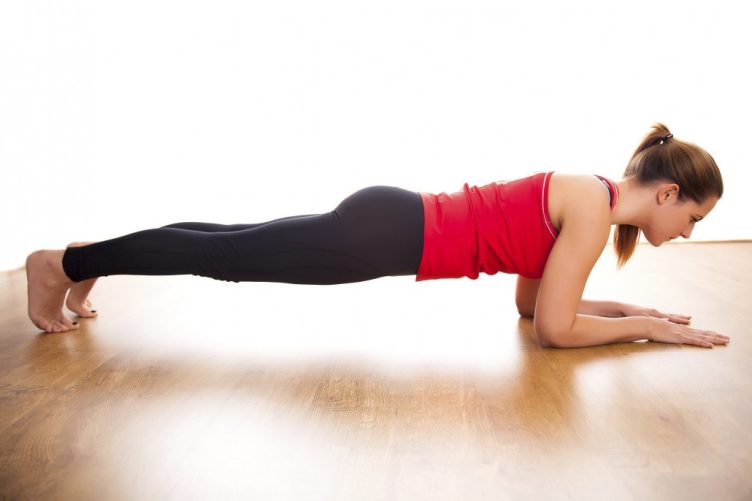 ШЁЩҮ ЪҜЩҒШӘЩҮ Ъ©Щ„ЫҢЩҶШҢ Ш§ЫҢЩҶ Щ…ЩҲШ¶ЩҲШ№ ШЁЩҮ Ш®ШөЩҲШө ШЁШұШ§ЫҢ ШІШ§ЩҶЩҲЩҮШ§ ШөШ§ШҜЩӮ Ш§ШіШӘШҢ Ш¬Ш§ЫҢЫҢ Ъ©ЩҮ ШӯШҜЩҲШҜ ЫөЫ° ШҜШұШөШҜ ШўШіЫҢШЁвҖҢЩҮШ§ЫҢ ЩҶШ§ШҙЫҢ Ш§ШІ ШҜЩҲЫҢШҜЩҶ ШұШ® Щ…ЫҢвҖҢШҜЩҮШҜ.
ШЁЩҮ ЪҜЩҒШӘЩҮ Ъ©Щ„ЫҢЩҶШҢ Ш§ЫҢЩҶ Щ…ЩҲШ¶ЩҲШ№ ШЁЩҮ Ш®ШөЩҲШө ШЁШұШ§ЫҢ ШІШ§ЩҶЩҲЩҮШ§ ШөШ§ШҜЩӮ Ш§ШіШӘШҢ Ш¬Ш§ЫҢЫҢ Ъ©ЩҮ ШӯШҜЩҲШҜ ЫөЫ° ШҜШұШөШҜ ШўШіЫҢШЁвҖҢЩҮШ§ЫҢ ЩҶШ§ШҙЫҢ Ш§ШІ ШҜЩҲЫҢШҜЩҶ ШұШ® Щ…ЫҢвҖҢШҜЩҮШҜ.
В«ШІШ§ЩҶЩҲЫҢ Ш®ЩҲШҜ ШұШ§ ШЁЩҮ Ш№ЩҶЩҲШ§ЩҶ Щ…ШұЪ©ШІ ЫҢЪ© ЩҫЩ„ ШҜШұ ЩҶШёШұ ШЁЪҜЫҢШұЫҢШҜШҢ ШЁШ§ ЩҫШ§ЫҢ ШҙЩ…Ш§ ШҜШұ ЫҢЪ© Ш·ШұЩҒ ЩҲ ШЁШ§ШіЩҶШӘШ§ЩҶ ШҜШұ Ш·ШұЩҒ ШҜЫҢЪҜШұВ».
Ш§ЩҲ ШӘЩҲШ¶ЫҢШӯ Щ…ЫҢвҖҢШҜЩҮШҜ: В«Ш§ЫҢЩҶ ЩҶШ§ШӯЫҢЩҮ Ш¶Ш№ЫҢЩҒ ШӘШұЫҢЩҶ ЩҶШ§ШӯЫҢЩҮ Ш§ШіШӘ ЩҲ Щ…ЫҢвҖҢШӘЩҲШ§ЩҶШҜ Ш§ШІ ЩҮШұ ШҜЩҲ Ш·ШұЩҒ ШӘШӯШӘ ШӘШ§Ш«ЫҢШұ ЩҲ ШўШіЫҢШЁвҖҢЩҫШ°ЫҢШұ ШЁШ§ШҙШҜ.В» Ш§ЪҜШұ ЩҒШұЩ… ШЁШҜЩҶЫҢ ЩҶШ§Щ…ЩҶШ§ШіШЁ ШҜШ§ШҙШӘЩҮ ШЁШ§ШҙЫҢШҜ Щ…Ш«Щ„Ш§ Ш§ЩҲЩҲШұШ§ШіШӘШұШ§ЫҢШҜ ЩҲ ЫҢШ§ ШЁЩҮ ШҜШ§Ш®Щ„ ШЁШұШҜЩҶ ЩҫШ§ЩҮШ§ШҢ ШІШ§ЩҶЩҲ ЩҒШҙШ§Шұ ШўЩҶ ШұШ§ ШӘШӯЩ…Щ„ Щ…ЫҢвҖҢЪ©ЩҶШҜ.

Ш¬ЩҶШӘ ЩҮЩ…ЫҢЩ„ШӘЩҲЩҶШҢ Щ…ШұШЁЫҢ ШЁШҜЩҶШіШ§ШІЫҢ ЩҲ ШўЩ…Ш§ШҜЪҜЫҢ Ш¬ШіЩ…Ш§ЩҶЫҢ ЩҲ Щ…Ш§Щ„Ъ© ШҙШұЪ©ШӘ Ъ©ЩҲЪҶЫҢЪҜ Running Strong ШҜШұ ШўШӘЩ„Ш§ЩҶШӘШ§ШҢ Щ…ЫҢвҖҢЪҜЩҲЫҢШҜ: В«ШЁШ§ ШӘЩӮЩҲЫҢШӘ Ш№Ш¶Щ„Ш§ШӘ ШІЫҢШұ ЩҲ ШЁШ§Щ„Ш§ЫҢ ШІШ§ЩҶЩҲШҢ Ш§ШІ Щ…Ш§ЩҮЫҢЪҶЩҮвҖҢЩҮШ§ЫҢ ЩҫШ§ ЪҜШұЩҒШӘЩҮ ШӘШ§ Ш№Ш¶Щ„Ш§ШӘ ШҙЪ©Щ…ШҢ Щ…ЫҢвҖҢШӘЩҲШ§ЩҶЫҢШҜ ЩҒШҙШ§Шұ ШҜЩҲЫҢШҜЩҶ ШЁШұ ШЁШҜЩҶ ШұШ§ ШұШ§ШӯШӘвҖҢШӘШұ ШӘШӯЩ…Щ„ Ъ©ШұШҜЩҮ ЩҲ Ш§ШІ Ш®ШіШӘЪҜЫҢ ЩҶШ§ШҙЫҢ Ш§ШІ ЩҒШұЩ… ЩҶШ§Щ…ЩҶШ§ШіШЁ ШЁШҜЩҶЫҢ Ш¬Щ„ЩҲЪҜЫҢШұЫҢ Ъ©ЩҶЫҢШҜВ».
Ш§ЩҲ Щ…ЫҢвҖҢЪҜЩҲЫҢШҜШҢ ШЁЩҮ ЩҮШұ ШӯШ§Щ„ Ш§ЪҜШұ ШЁШӘЩҲШ§ЩҶЫҢШҜ ШЁШ§ШұЩҮШ§ ЩҲ ШЁШ§ШұЩҮШ§ ЩҲШІЩҶЩҮвҖҢЩҮШ§ЫҢ ШіЩҶЪҜЫҢЩҶ ШЁЩ„ЩҶШҜ Ъ©ЩҶЫҢШҜШҢ ШӯЩ…Щ„ ЩҲШІЩҶ ШЁШҜЩҶШӘШ§ЩҶ ШЁШұШ§ЫҢ ЪҶЩҶШҜЫҢЩҶ Ъ©ЫҢЩ„ЩҲЩ…ШӘШұ ШЁШіЫҢШ§Шұ ШұШ§ШӯШӘвҖҢШӘШұ Ш®ЩҲШ§ЩҮШҜ ШЁЩҲШҜ.
ЩҮЩ…ЪҶЩҶЫҢЩҶ ЩӮШҜШұШӘ ШЁШҜЩҶЫҢ ШЁШ§Щ„Ш§ ШЁЩҮ ШҙЩ…Ш§ Ъ©Щ…Ъ© Щ…ЫҢвҖҢЪ©ЩҶШҜ ШӘШ§ ШЁШұШ§ЫҢ ШӘШ№Ш§ШҜЩ„ЫҢ Ъ©ЩҮ ШҜЩҲЫҢШҜЩҶ ЩҶЫҢШ§ШІ ШҜШ§ШұШҜ ШўЩ…Ш§ШҜЩҮ ШҙЩҲЫҢШҜ. ЩҮЩ…ЫҢЩ„ШӘЩҲЩҶ Щ…ЫҢвҖҢЪҜЩҲЫҢШҜ: В«ЩҮШұ ШЁШ§Шұ Ъ©ЩҮ ШұЩҲЫҢ ЫҢЪ© ЩҫШ§ ЩҒШұЩҲШҜ Щ…ЫҢвҖҢШўЫҢЫҢШҜШҢ Ъ©Щ„ ШЁШҜЩҶ ШҙЩ…Ш§ ШЁШ§ЫҢШҜ ШЁЩҮ ЪҜЩҲЩҶЩҮвҖҢШ§ЫҢ Щ…ШӘШ№Ш§ШҜЩ„ ШЁШ§ШҙШҜ Ъ©ЩҮ ШӯШ§Щ„ШӘ ШЁШҜЩҶ ШҙЩ…Ш§ Ш«Ш§ШЁШӘ ШЁЩ…Ш§ЩҶШҜ ЩҲ ШЁЩҮ ШҜЩҲ Ш·ШұЩҒ ЩҫЫҢЪҶ ЩҲ ШӘШ§ШЁ ЩҶШ®ЩҲШұЫҢШҜ.В»
Ъ©Щ„Ш§ЫҢЩҶ ШҜШұ Ш§ЫҢЩҶШЁШ§ШұЩҮ Щ…ЫҢвҖҢЪҜЩҲЫҢШҜ: В«ЩҒШҙШ§Шұ ЩҲШІЩҶЩҮШҢ Щ…Ш§ЩҮЫҢЪҶЩҮ ШұШ§ ШҜШұ Ш§Щ„ЪҜЩҲЫҢЫҢ Щ…ШҙШ§ШЁЩҮ ШўЩҶЪҶЩҮ ШҜШұ ЩҮЩҶЪҜШ§Щ… ШҜЩҲЫҢШҜЩҶ ШӘШ¬ШұШЁЩҮ Щ…ЫҢвҖҢЪ©ЩҶЫҢШҜШҢ ЩӮШұШ§Шұ Щ…ЫҢвҖҢШҜЩҮШҜВ». ШұЩҲЫҢ ШӘЩ…ШұЫҢЩҶШ§ШӘЫҢ ШӘЪ©вҖҢЩҫШ§ЫҢЫҢ Щ…Ш§ЩҶЩҶШҜ Щ„Ш§ЩҶЪҳШҢ Ш§ШіШӘЩҫвҖҢШўЩҫ ЩҲ ШҜЩҗШҜЩ„ЫҢЩҒШӘ ШӘЩ…ШұЪ©ШІ Ъ©ЩҶЫҢШҜ.
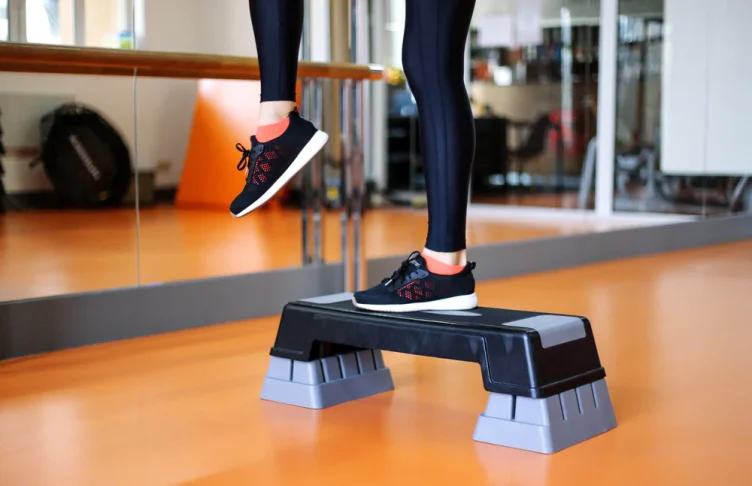 ШӯШҜШ§ЩӮЩ„ ЪҶЩҶШҜЫҢЩҶ Ш¬Щ„ШіЩҮ ШҜШұ ЩҮЩҒШӘЩҮ ШұЩҲЫҢ ШӘЩ…ШұЫҢЩҶШ§ШӘ ШӯШұЪ©ШӘЫҢ ШӘЩ…ШұЪ©ШІ Ъ©ЩҶЫҢШҜ. ЩӮШЁЩ„ ЫҢШ§ ШЁШ№ШҜ Ш§ШІ ЩҮШұ ШӘЩ…ШұЫҢЩҶЫҢ ШӯШұЪ©Ш§ШӘ Ъ©ШҙШҙЫҢ Ш§ЩҶШ¬Ш§Щ… ШҜШ§ШҜЩҮ ЫҢШ§ ШЁЩҮ Щ…ЩҺШӘ ЫҢЩҲЪҜШ§ Ш¶ШұШЁЩҮ ШЁШІЩҶЫҢШҜ ЫҢШ§ ЫҢЪ© Ш¬Щ„ШіЩҮ Ъ©Ш§Щ…Щ„ ШұШ§ ШЁЩҮ ШӘЩ…ШұЫҢЩҶШ§ШӘ ШӯШұЪ©ШӘЫҢ Ш§Ш®ШӘШөШ§Шө ШҜЩҮЫҢШҜ ШӘШ§ ШұЫҢЩ„Ъ©Ші ШЁЩ…Ш§ЩҶЫҢШҜ.
ШӯШҜШ§ЩӮЩ„ ЪҶЩҶШҜЫҢЩҶ Ш¬Щ„ШіЩҮ ШҜШұ ЩҮЩҒШӘЩҮ ШұЩҲЫҢ ШӘЩ…ШұЫҢЩҶШ§ШӘ ШӯШұЪ©ШӘЫҢ ШӘЩ…ШұЪ©ШІ Ъ©ЩҶЫҢШҜ. ЩӮШЁЩ„ ЫҢШ§ ШЁШ№ШҜ Ш§ШІ ЩҮШұ ШӘЩ…ШұЫҢЩҶЫҢ ШӯШұЪ©Ш§ШӘ Ъ©ШҙШҙЫҢ Ш§ЩҶШ¬Ш§Щ… ШҜШ§ШҜЩҮ ЫҢШ§ ШЁЩҮ Щ…ЩҺШӘ ЫҢЩҲЪҜШ§ Ш¶ШұШЁЩҮ ШЁШІЩҶЫҢШҜ ЫҢШ§ ЫҢЪ© Ш¬Щ„ШіЩҮ Ъ©Ш§Щ…Щ„ ШұШ§ ШЁЩҮ ШӘЩ…ШұЫҢЩҶШ§ШӘ ШӯШұЪ©ШӘЫҢ Ш§Ш®ШӘШөШ§Шө ШҜЩҮЫҢШҜ ШӘШ§ ШұЫҢЩ„Ъ©Ші ШЁЩ…Ш§ЩҶЫҢШҜ.
Ы·. ШЁЫҢШҙ Ш§ШІ ШӯШҜ ШЁЩҮ ШўЩҶ ЩҒЪ©Шұ ЩҶЪ©ЩҶЫҢШҜ
ШЁЩ„ЩҮШҢ Ш®ЫҢЩ„ЫҢ ШІЫҢШ§ШҜ ШЁЩҲШҜШҢ Ш§Щ…Ш§ Щ„Ш§ШІЩ… ЩҶЫҢШіШӘ ЩҒЩҲШұШ§ Ш§ШІ ЩҮЩ…ЩҮ Ш§ЫҢЩҶ Щ…ЩҲШ§ШұШҜ Ш§ШіШӘЩҒШ§ШҜЩҮ Ъ©ЩҶЫҢШҜ. ШіШ№ЫҢ Ъ©ЩҶЫҢШҜ ШҙШҜЩҮ ЩҒЩӮШ· ЫҢЪ©ЫҢ Ш§ШІ Ш§ЫҢЩҶ Щ…ЩҲШ§ШұШҜ ШұШ§ ШӯЫҢЩҶ ШҜЩҲЫҢШҜЩҶ (ЩҲ ШіШ§ЫҢШұ ШІЩ…Ш§ЩҶвҖҢЩҮШ§) ШҜШұ Ш°ЩҮЩҶ ШҜШ§ШҙШӘЩҮ ШЁШ§ШҙЫҢШҜ ШӘШ§ Ъ©Щ… Ъ©Щ… ЩҒШұЩ… ШЁШҜЩҶЫҢ Ш®ЩҲШҜ ШұШ§ ШЁЩҮШЁЩҲШҜ ШЁШ®ШҙЫҢШҜ.
ШЁШ№ШҜ Ш§ШІ ШўЩҶ Щ…ЫҢвҖҢШӘЩҲШ§ЩҶЫҢШҜ Щ…ЩҲШ§ШұШҜ ШЁЫҢШҙШӘШұЫҢ Ш§ШІ Ш§ЫҢЩҶ Щ„ЫҢШіШӘ ШұШ§ Ш§Ш¶Ш§ЩҒЩҮ Ъ©ЩҶЫҢШҜ. ШҙЩ…Ш§ ЩҶЩҮ ШӘЩҶЩҮШ§ ШЁЩҮ Щ…ШұЩҲШұ ШІЩ…Ш§ЩҶ ШЁЩҮ ЫҢЪ© ШҜЩҲЩҶШҜЩҮ ЩӮЩҲЫҢвҖҢШӘШұ ШӘШЁШҜЫҢЩ„ Ш®ЩҲШ§ЩҮЫҢШҜ ШҙШҜШҢ ШЁЩ„Ъ©ЩҮ ШҜЫҢЪҜШұ Щ…Ш§ЩҶЩҶШҜ ЩҒЫҢШЁЫҢ ЩҮЩҶЪҜШ§Щ… ШҜЩҲЫҢШҜЩҶШҢ Щ…ЩӮШ§ШЁЩ„ ШҜЩҲШіШӘШ§ЩҶ Ш®ЩҲШҜ Ш®Ш¬Ш§Щ„ШӘ ШІШҜЩҮ ЩҶШ®ЩҲШ§ЩҮЫҢШҜ ШҙШҜ.
 Cr: nike.com
Cr: nike.com
|





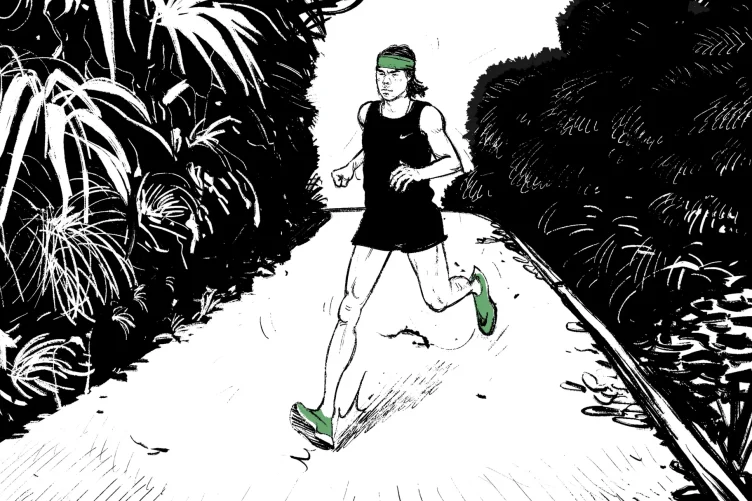
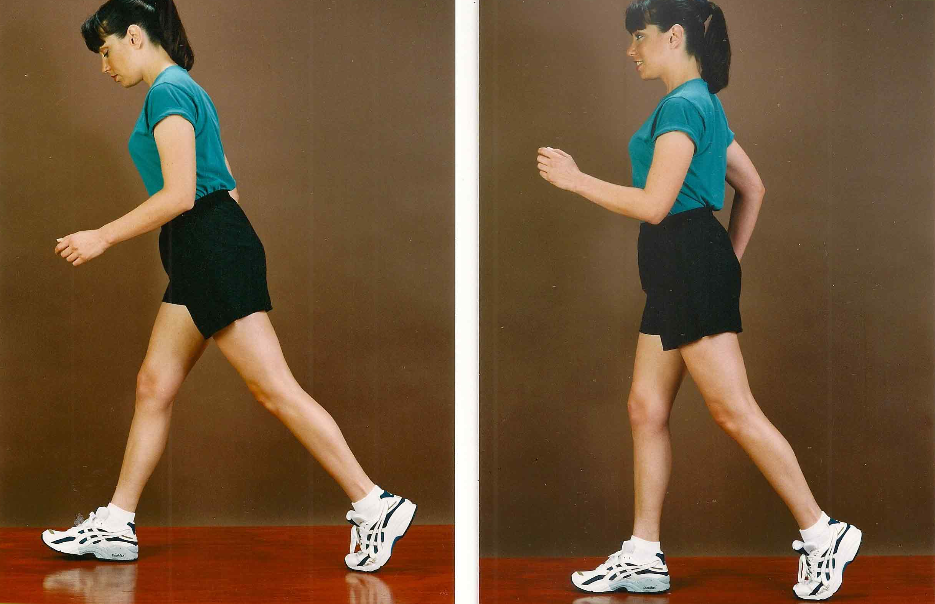
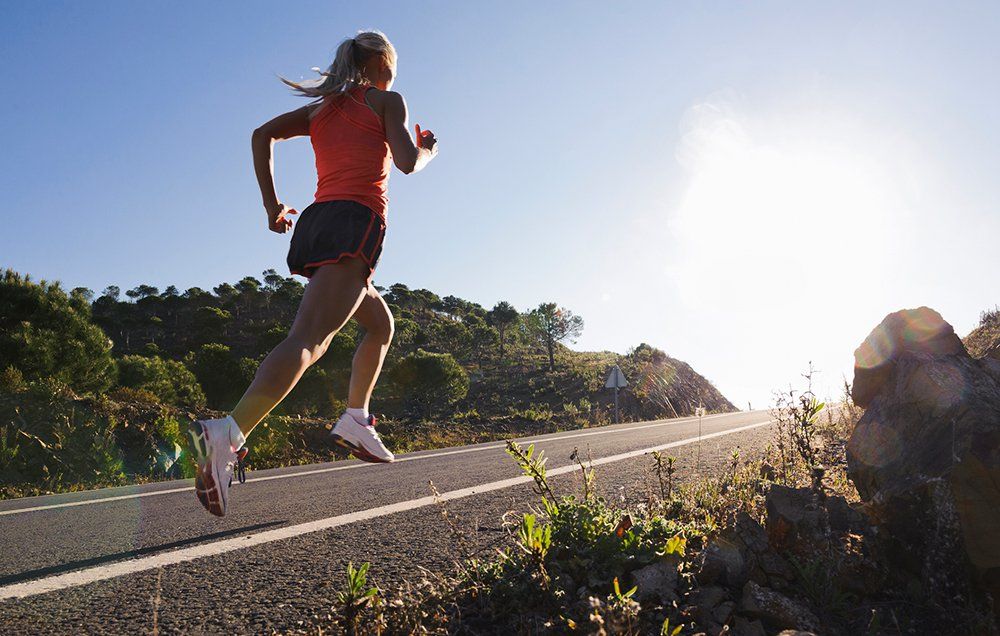 Ыі. ШЁШұШ§ЫҢ ШҜЩҲЫҢШҜЩҶ ШҜШұ ШҙЫҢШЁ ШўЩ…Ш§ШҜЩҮ ШЁШ§ШҙЫҢШҜ
Ыі. ШЁШұШ§ЫҢ ШҜЩҲЫҢШҜЩҶ ШҜШұ ШҙЫҢШЁ ШўЩ…Ш§ШҜЩҮ ШЁШ§ШҙЫҢШҜ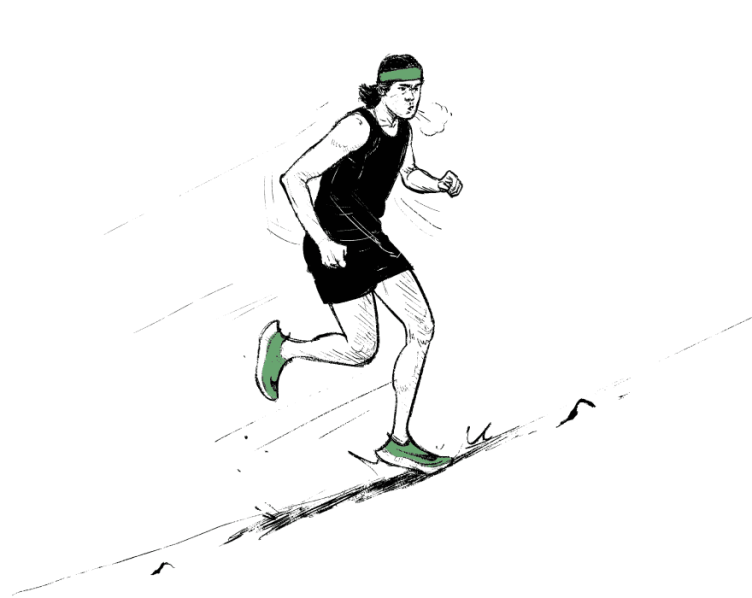

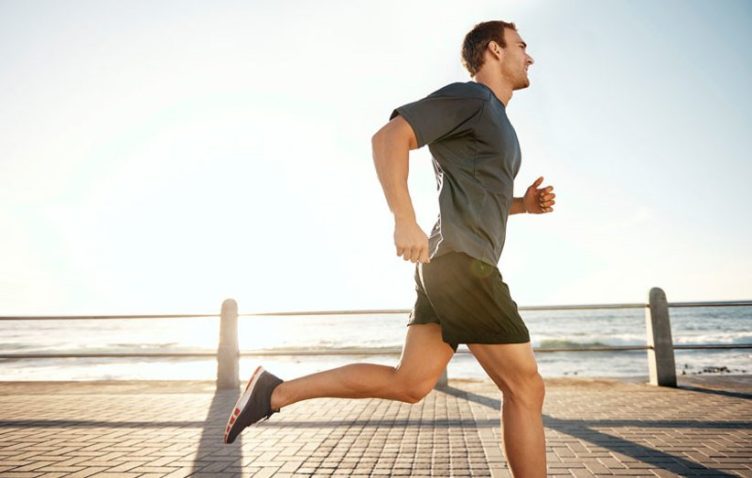

 ЩҒШұЩ… ШҜЩҲЫҢШҜЩҶ Щ…ЫҢвҖҢШӘЩҲШ§ЩҶШҜ ШЁЩҮ ШҙЩ…Ш§ Ъ©Щ…Ъ© Ъ©ЩҶШҜ ШӘШ§ ШіШұЫҢШ№вҖҢШӘШұШҢ Ъ©Ш§ШұШўЩ…ШҜШӘШұ ЩҲ ШұШ§ШӯШӘвҖҢШӘШұ ШЁШҜЩҲЫҢШҜ ЩҲ Ш§ШіШӘШұШі Ъ©Щ…ШӘШұЫҢ ШЁШұ ШЁШҜЩҶШӘШ§ЩҶ ЩҲШ§ШұШҜ Ъ©ЩҶЫҢШҜ ЩҲ Ш®Ш·Шұ ШўШіЫҢШЁ Ъ©Щ…ШӘШұЫҢ ШҜШ§ШҙШӘЩҮ ШЁШ§ШҙЫҢШҜ. ШҜЩҲЫҢШҜЩҶ ШЁШ§ ЩҒШұЩ… Щ…ЩҶШ§ШіШЁШҢ Ш®ШіШӘЪҜЫҢ ШҙЩ…Ш§ ШұШ§ Ъ©Ш§ЩҮШҙ Щ…ЫҢ ШҜЩҮШҜ ЩҲ ШӘШ¶Щ…ЫҢЩҶ Щ…ЫҢ Ъ©ЩҶШҜ Ъ©ЩҮ ШЁЫҢШҙШӘШұЫҢЩҶ ШЁЩҮШұЩҮ ШұШ§ Ш§ШІ ШҜЩҲЫҢШҜЩҶ Ш®ЩҲШҜ Щ…ЫҢ ШЁШұЫҢШҜ. ШЁШұШ§ЫҢ ШЁЩҮШӘШұ ШҙШҜЩҶ ЩҒШұЩ… ШҜЩҲЫҢШҜЩҶ Ш®ЩҲШҜ Ш§ЫҢЩҶ ШұШ§ЩҮЪ©Ш§ШұЩҮШ§ ШұШ§ Ш§ЩҶШ¬Ш§Щ… ШҜЩҮЫҢШҜ.
ЩҒШұЩ… ШҜЩҲЫҢШҜЩҶ Щ…ЫҢвҖҢШӘЩҲШ§ЩҶШҜ ШЁЩҮ ШҙЩ…Ш§ Ъ©Щ…Ъ© Ъ©ЩҶШҜ ШӘШ§ ШіШұЫҢШ№вҖҢШӘШұШҢ Ъ©Ш§ШұШўЩ…ШҜШӘШұ ЩҲ ШұШ§ШӯШӘвҖҢШӘШұ ШЁШҜЩҲЫҢШҜ ЩҲ Ш§ШіШӘШұШі Ъ©Щ…ШӘШұЫҢ ШЁШұ ШЁШҜЩҶШӘШ§ЩҶ ЩҲШ§ШұШҜ Ъ©ЩҶЫҢШҜ ЩҲ Ш®Ш·Шұ ШўШіЫҢШЁ Ъ©Щ…ШӘШұЫҢ ШҜШ§ШҙШӘЩҮ ШЁШ§ШҙЫҢШҜ. ШҜЩҲЫҢШҜЩҶ ШЁШ§ ЩҒШұЩ… Щ…ЩҶШ§ШіШЁШҢ Ш®ШіШӘЪҜЫҢ ШҙЩ…Ш§ ШұШ§ Ъ©Ш§ЩҮШҙ Щ…ЫҢ ШҜЩҮШҜ ЩҲ ШӘШ¶Щ…ЫҢЩҶ Щ…ЫҢ Ъ©ЩҶШҜ Ъ©ЩҮ ШЁЫҢШҙШӘШұЫҢЩҶ ШЁЩҮШұЩҮ ШұШ§ Ш§ШІ ШҜЩҲЫҢШҜЩҶ Ш®ЩҲШҜ Щ…ЫҢ ШЁШұЫҢШҜ. ШЁШұШ§ЫҢ ШЁЩҮШӘШұ ШҙШҜЩҶ ЩҒШұЩ… ШҜЩҲЫҢШҜЩҶ Ш®ЩҲШҜ Ш§ЫҢЩҶ ШұШ§ЩҮЪ©Ш§ШұЩҮШ§ ШұШ§ Ш§ЩҶШ¬Ш§Щ… ШҜЩҮЫҢШҜ.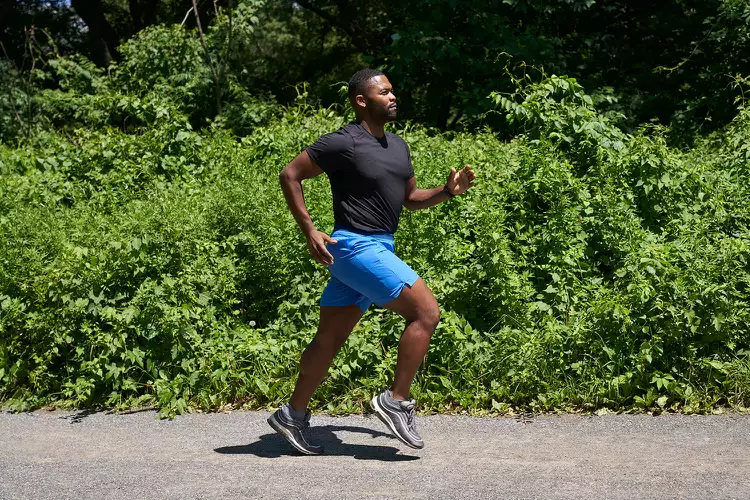
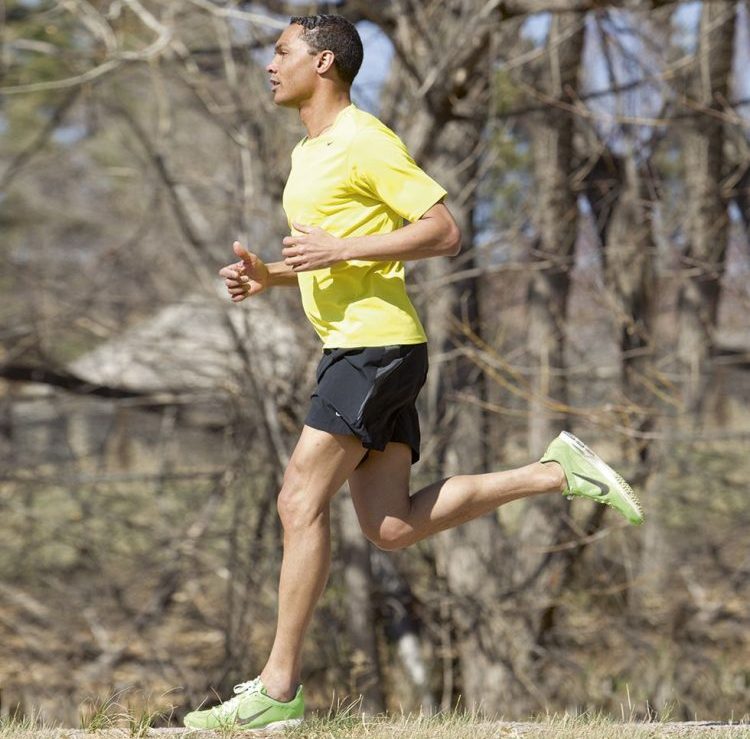
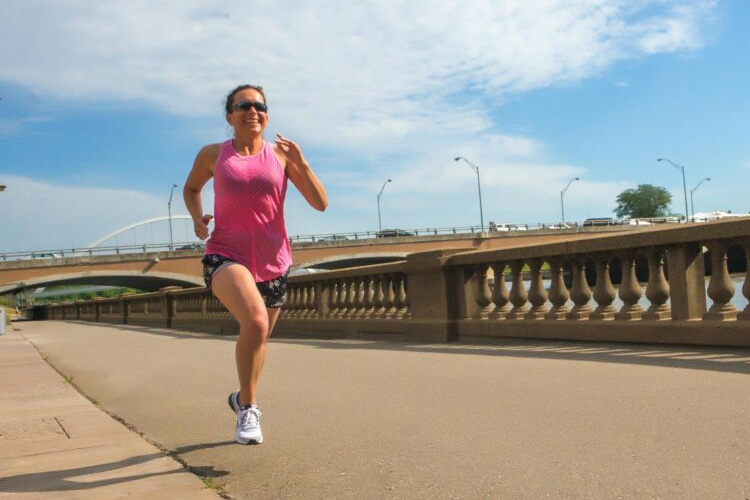 4.ЩҲШ¶Ш№ЫҢШӘ ШЁШҜЩҶ Ш®ЩҲШҜ ШұШ§ ШЁШұШұШіЫҢ Ъ©ЩҶЫҢШҜ
4.ЩҲШ¶Ш№ЫҢШӘ ШЁШҜЩҶ Ш®ЩҲШҜ ШұШ§ ШЁШұШұШіЫҢ Ъ©ЩҶЫҢШҜ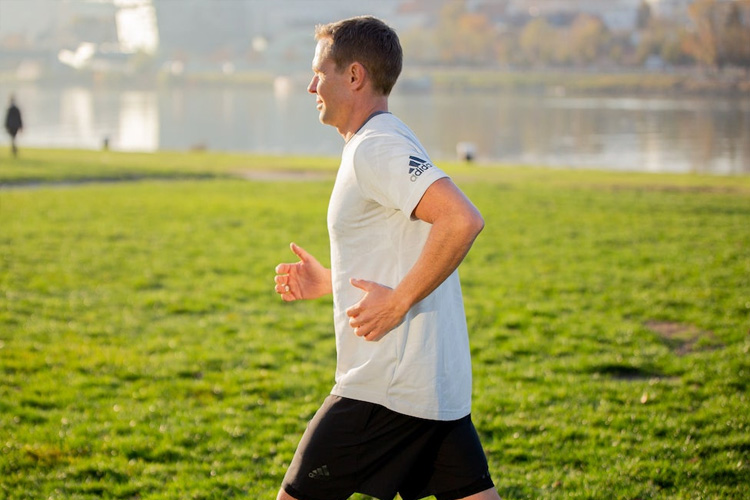
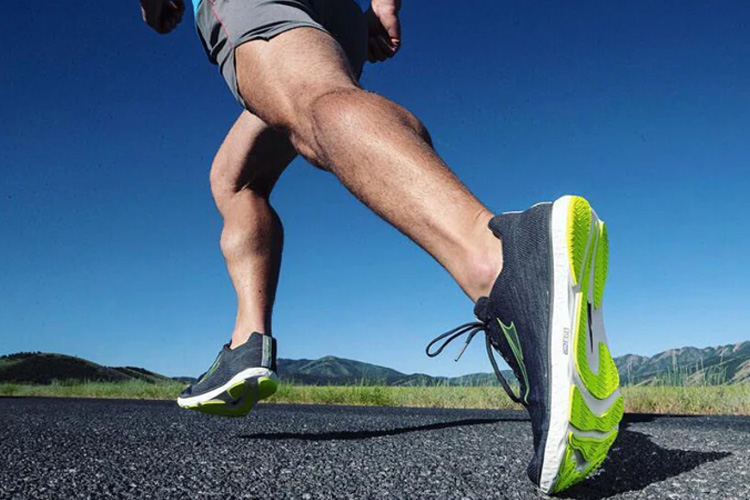 Ш№Щ„Ш§ЩҲЩҮ ШЁШұ Ш§ЫҢЩҶШҢ ЩҫЩҲШҙЫҢШҜЩҶ Ъ©ЩҒШҙ ЩҮШ§ЫҢ ШҜЩҲЫҢШҜЩҶ ШЁШ§ ШҜШұШ§Щҫ ШөЩҒШұ (zero drop running shoes have a 0-millimeter heel-to-toe drop) Щ…ЫҢ ШӘЩҲШ§ЩҶШҜ ШЁЩҮ Ш¬Щ„ЩҲЪҜЫҢШұЫҢ Ш§ШІ ШҜЩҲЫҢШҜЩҶ ШЁШ§ Ш¶ШұШЁЩҮ ЩҫШ§ШҙЩҶЩҮ Ъ©Щ…Ъ© Ъ©ЩҶШҜ.
Ш№Щ„Ш§ЩҲЩҮ ШЁШұ Ш§ЫҢЩҶШҢ ЩҫЩҲШҙЫҢШҜЩҶ Ъ©ЩҒШҙ ЩҮШ§ЫҢ ШҜЩҲЫҢШҜЩҶ ШЁШ§ ШҜШұШ§Щҫ ШөЩҒШұ (zero drop running shoes have a 0-millimeter heel-to-toe drop) Щ…ЫҢ ШӘЩҲШ§ЩҶШҜ ШЁЩҮ Ш¬Щ„ЩҲЪҜЫҢШұЫҢ Ш§ШІ ШҜЩҲЫҢШҜЩҶ ШЁШ§ Ш¶ШұШЁЩҮ ЩҫШ§ШҙЩҶЩҮ Ъ©Щ…Ъ© Ъ©ЩҶШҜ. ШЁШұШұШіЫҢ Ъ©ЩҶЫҢШҜ Ъ©ЩҮ ШҙШ§ЩҶЩҮвҖҢЩҮШ§ЫҢШӘШ§ЩҶ ШӘШ§ ЩҶШІШҜЫҢЪ© ЪҜЩҲШҙвҖҢЩҮШ§ЫҢШӘШ§ЩҶ ШЁШ§Щ„Ш§ ЩҶШұЩҲШҜ. ШҜШұ Ш§ЫҢЩҶ ШөЩҲШұШӘШҢ ШӘЫҢШәЩҮ ЩҮШ§ЫҢ ШҙШ§ЩҶЩҮ Ш®ЩҲШҜ ШұШ§ ШЁЩҮ ШіЩ…ШӘ ЩҫШҙШӘ Ш®ЩҲШҜ Щ…ЩҶЩӮШЁШ¶ Ъ©ЩҶЫҢШҜ.
ШЁШұШұШіЫҢ Ъ©ЩҶЫҢШҜ Ъ©ЩҮ ШҙШ§ЩҶЩҮвҖҢЩҮШ§ЫҢШӘШ§ЩҶ ШӘШ§ ЩҶШІШҜЫҢЪ© ЪҜЩҲШҙвҖҢЩҮШ§ЫҢШӘШ§ЩҶ ШЁШ§Щ„Ш§ ЩҶШұЩҲШҜ. ШҜШұ Ш§ЫҢЩҶ ШөЩҲШұШӘШҢ ШӘЫҢШәЩҮ ЩҮШ§ЫҢ ШҙШ§ЩҶЩҮ Ш®ЩҲШҜ ШұШ§ ШЁЩҮ ШіЩ…ШӘ ЩҫШҙШӘ Ш®ЩҲШҜ Щ…ЩҶЩӮШЁШ¶ Ъ©ЩҶЫҢШҜ.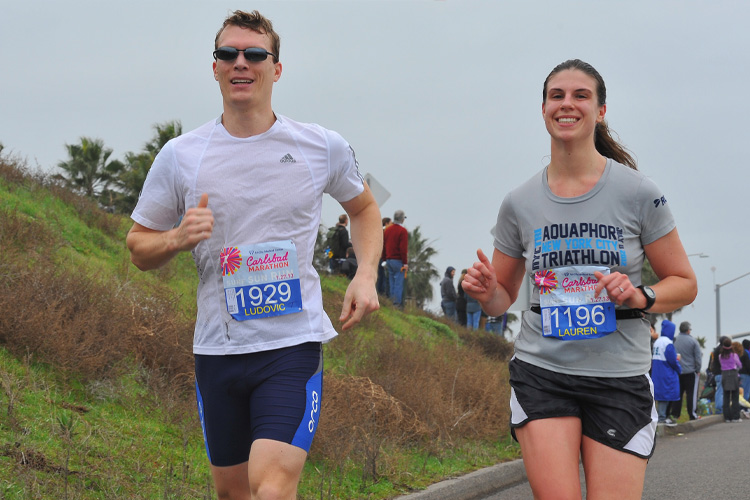 ШІЩ…Ш§ЩҶЫҢ Ъ©ЩҮ ШҜЩҲЩҶШҜЪҜШ§ЩҶ Ш®ШіШӘЩҮ ЫҢШ§ ШӘШӯШӘ ШӘЩҶШҙ ЩҮШіШӘЩҶШҜШҢ ШҜШіШӘвҖҢЩҮШ§ЫҢШҙШ§ЩҶ ШЁЩҮ ШіЩ…ШӘ ШҙШ§ЩҶЩҮвҖҢЩҮШ§ЫҢШҙШ§ЩҶ ШЁШ§Щ„Ш§ Щ…ЫҢвҖҢШұЩҲШҜ ЩҲ ЩҒШ§ШөЩ„ЩҮ ШЁЫҢЩҶ ШЁШ§ШІЩҲ ЩҲ ШіШ§Ш№ШҜ ШұШ§ Ъ©ЩҲШӘШ§ЩҮ Щ…ЫҢвҖҢЪ©ЩҶШҜ. Ш§ЪҜШұ Щ…ШӘЩҲШ¬ЩҮ Ш§ЫҢЩҶ Ш§ШӘЩҒШ§ЩӮ Ш§ЩҒШӘШ§ШҜЫҢШҜШҢ Ш§Ш¬Ш§ШІЩҮ ШҜЩҮЫҢШҜ ШЁШ§ШІЩҲЩҮШ§ЫҢШӘШ§ЩҶ ШҜШұ Ъ©ЩҶШ§ШұШӘШ§ЩҶ ШЁЫҢЩҒШӘЩҶШҜ ЩҲ ШўЩҶЩҮШ§ ШұШ§ ШӘЪ©Ш§ЩҶ ШҜЩҮЫҢШҜ. ШўЩҶЩҮШ§ ШұШ§ ШҜШұ ЫҢЪ© ШІШ§ЩҲЫҢЩҮ 90 ШҜШұШ¬ЩҮ ШҜШұ ШӯШ§Щ„ЫҢ Ъ©ЩҮ ШҙШ§ЩҶЩҮ ЩҮШ§ЫҢ Ш®ЩҲШҜ ШЁЩҮ Ш№ЩӮШЁ ЩҲ ШұЫҢЩ„Ъ©Ші ЩҮШіШӘЩҶШҜШҢ ЩӮШұШ§Шұ ШҜЩҮЫҢШҜ.
ШІЩ…Ш§ЩҶЫҢ Ъ©ЩҮ ШҜЩҲЩҶШҜЪҜШ§ЩҶ Ш®ШіШӘЩҮ ЫҢШ§ ШӘШӯШӘ ШӘЩҶШҙ ЩҮШіШӘЩҶШҜШҢ ШҜШіШӘвҖҢЩҮШ§ЫҢШҙШ§ЩҶ ШЁЩҮ ШіЩ…ШӘ ШҙШ§ЩҶЩҮвҖҢЩҮШ§ЫҢШҙШ§ЩҶ ШЁШ§Щ„Ш§ Щ…ЫҢвҖҢШұЩҲШҜ ЩҲ ЩҒШ§ШөЩ„ЩҮ ШЁЫҢЩҶ ШЁШ§ШІЩҲ ЩҲ ШіШ§Ш№ШҜ ШұШ§ Ъ©ЩҲШӘШ§ЩҮ Щ…ЫҢвҖҢЪ©ЩҶШҜ. Ш§ЪҜШұ Щ…ШӘЩҲШ¬ЩҮ Ш§ЫҢЩҶ Ш§ШӘЩҒШ§ЩӮ Ш§ЩҒШӘШ§ШҜЫҢШҜШҢ Ш§Ш¬Ш§ШІЩҮ ШҜЩҮЫҢШҜ ШЁШ§ШІЩҲЩҮШ§ЫҢШӘШ§ЩҶ ШҜШұ Ъ©ЩҶШ§ШұШӘШ§ЩҶ ШЁЫҢЩҒШӘЩҶШҜ ЩҲ ШўЩҶЩҮШ§ ШұШ§ ШӘЪ©Ш§ЩҶ ШҜЩҮЫҢШҜ. ШўЩҶЩҮШ§ ШұШ§ ШҜШұ ЫҢЪ© ШІШ§ЩҲЫҢЩҮ 90 ШҜШұШ¬ЩҮ ШҜШұ ШӯШ§Щ„ЫҢ Ъ©ЩҮ ШҙШ§ЩҶЩҮ ЩҮШ§ЫҢ Ш®ЩҲШҜ ШЁЩҮ Ш№ЩӮШЁ ЩҲ ШұЫҢЩ„Ъ©Ші ЩҮШіШӘЩҶШҜШҢ ЩӮШұШ§Шұ ШҜЩҮЫҢШҜ.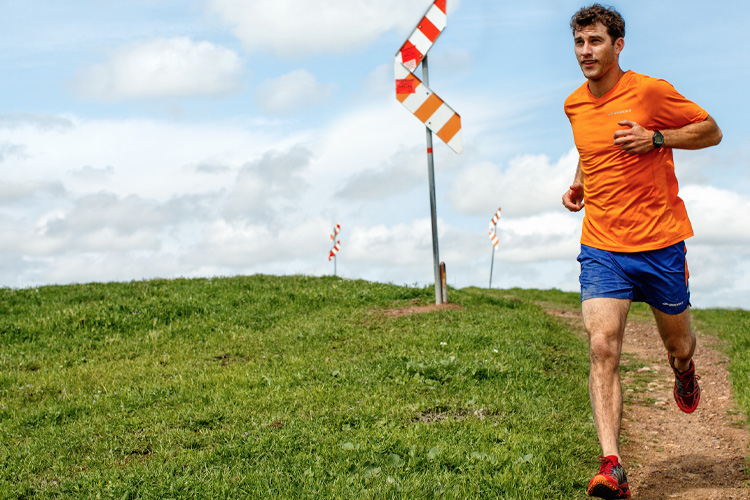 ШЁШ§ШІЩҲЩҮШ§ЫҢШӘШ§ЩҶ ШЁШ§ЫҢШҜ ШҜШұ Ъ©ЩҶШ§ШұШӘШ§ЩҶ ШӯШұЪ©ШӘ Ъ©ЩҶЩҶШҜ. Ш§ЪҜШұ Ш§ШІ ШұЩҲЫҢ ШіЫҢЩҶЩҮ Ш№ШЁЩҲШұ Ъ©ЩҶЩҶШҜШҢ ШҙШұЩҲШ№ ШЁЩҮ ШӯШұЪ©ШӘ ШЁЩҮ ШіЩ…ШӘ ШҙШ§ЩҶЩҮвҖҢЩҮШ§ Щ…ЫҢвҖҢЪ©ЩҶЩҶШҜ ЩҲ Ъ©Щ… Ъ©Щ… Ш®Щ…ЫҢШҜЩҮ ШЁЩҶШёШұ Ш®ЩҲШ§ЩҮЫҢ ШұШіЫҢШҜ.
ШЁШ§ШІЩҲЩҮШ§ЫҢШӘШ§ЩҶ ШЁШ§ЫҢШҜ ШҜШұ Ъ©ЩҶШ§ШұШӘШ§ЩҶ ШӯШұЪ©ШӘ Ъ©ЩҶЩҶШҜ. Ш§ЪҜШұ Ш§ШІ ШұЩҲЫҢ ШіЫҢЩҶЩҮ Ш№ШЁЩҲШұ Ъ©ЩҶЩҶШҜШҢ ШҙШұЩҲШ№ ШЁЩҮ ШӯШұЪ©ШӘ ШЁЩҮ ШіЩ…ШӘ ШҙШ§ЩҶЩҮвҖҢЩҮШ§ Щ…ЫҢвҖҢЪ©ЩҶЩҶШҜ ЩҲ Ъ©Щ… Ъ©Щ… Ш®Щ…ЫҢШҜЩҮ ШЁЩҶШёШұ Ш®ЩҲШ§ЩҮЫҢ ШұШіЫҢШҜ. ШЁШұШ§ЫҢ ШЁЩҮ ШӯШҜШ§ЩӮЩ„ ШұШіШ§ЩҶШҜЩҶ ЩҫШұШҙ ЩҲ ШөШұЩҒЩҮ Ш¬ЩҲЫҢЫҢ ШҜШұ Ш§ЩҶШұЪҳЫҢШҢ ШЁЩҮ ШўШұШ§Щ…ЫҢ ШЁШҜЩҲЫҢШҜ ЩҲ ШЁЩҮ ШўШұШ§Щ…ЫҢ ШұЩҲЫҢ ЩҫШ§ЩҮШ§ЫҢ Ш®ЩҲШҜ ЩҒШұЩҲШҜ ШЁЫҢШ§ЫҢЫҢШҜ. ШіШ№ЫҢ Ъ©ЩҶЫҢШҜ Ш·ЩҲЩ„ ЪҜШ§Щ… Ш®ЩҲШҜ ШұШ§ ЩҫШ§ЫҢЫҢЩҶ ЩҶЪҜЩҮ ШҜШ§ШұЫҢШҜ ЩҲ ШұЩҲЫҢ Ъ©ЫҢШҜЩҶШі ШЁЫҢШҙШӘШұ (ЪҶШұШ®Шҙ ЪҜШ§Щ…) ШӘЩ…ШұЪ©ШІ Ъ©ЩҶЫҢШҜ.
ШЁШұШ§ЫҢ ШЁЩҮ ШӯШҜШ§ЩӮЩ„ ШұШіШ§ЩҶШҜЩҶ ЩҫШұШҙ ЩҲ ШөШұЩҒЩҮ Ш¬ЩҲЫҢЫҢ ШҜШұ Ш§ЩҶШұЪҳЫҢШҢ ШЁЩҮ ШўШұШ§Щ…ЫҢ ШЁШҜЩҲЫҢШҜ ЩҲ ШЁЩҮ ШўШұШ§Щ…ЫҢ ШұЩҲЫҢ ЩҫШ§ЩҮШ§ЫҢ Ш®ЩҲШҜ ЩҒШұЩҲШҜ ШЁЫҢШ§ЫҢЫҢШҜ. ШіШ№ЫҢ Ъ©ЩҶЫҢШҜ Ш·ЩҲЩ„ ЪҜШ§Щ… Ш®ЩҲШҜ ШұШ§ ЩҫШ§ЫҢЫҢЩҶ ЩҶЪҜЩҮ ШҜШ§ШұЫҢШҜ ЩҲ ШұЩҲЫҢ Ъ©ЫҢШҜЩҶШі ШЁЫҢШҙШӘШұ (ЪҶШұШ®Шҙ ЪҜШ§Щ…) ШӘЩ…ШұЪ©ШІ Ъ©ЩҶЫҢШҜ. ЩҮШұ ЪҜЩҲЩҶЩҮ ШӘШәЫҢЫҢШұ ШҜШұ Ъ©ЫҢШҜЩҶШі ЩҲ ЩҒШұЩҲШҜ ЩҫШ§ ШұШ§ ЩҒЩӮШ· ШЁШұШ§ЫҢ ШҜЩҲШұЩҮ ЩҮШ§ЫҢ Ъ©ЩҲШӘШ§ЩҮ ШҜШ§ШҙШӘЩҮ ШЁШ§ШҙЫҢШҜ. ШҜШұ Ш§ШЁШӘШҜШ§ Ш§ШӯШіШ§Ші ШәЫҢШұШ·ШЁЫҢШ№ЫҢ Ш®ЩҲШ§ЩҮЫҢ ШҜШ§ШҙШӘ ЩҲ ШҙЩ…Ш§ ЩҶШЁШ§ЫҢШҜ ШҜШұ Ш§ЫҢЩҶ Ъ©Ш§Шұ ШІЫҢШ§ШҜЩҮ ШұЩҲЫҢ Ъ©ЩҶЫҢШҜ.
ЩҮШұ ЪҜЩҲЩҶЩҮ ШӘШәЫҢЫҢШұ ШҜШұ Ъ©ЫҢШҜЩҶШі ЩҲ ЩҒШұЩҲШҜ ЩҫШ§ ШұШ§ ЩҒЩӮШ· ШЁШұШ§ЫҢ ШҜЩҲШұЩҮ ЩҮШ§ЫҢ Ъ©ЩҲШӘШ§ЩҮ ШҜШ§ШҙШӘЩҮ ШЁШ§ШҙЫҢШҜ. ШҜШұ Ш§ШЁШӘШҜШ§ Ш§ШӯШіШ§Ші ШәЫҢШұШ·ШЁЫҢШ№ЫҢ Ш®ЩҲШ§ЩҮЫҢ ШҜШ§ШҙШӘ ЩҲ ШҙЩ…Ш§ ЩҶШЁШ§ЫҢШҜ ШҜШұ Ш§ЫҢЩҶ Ъ©Ш§Шұ ШІЫҢШ§ШҜЩҮ ШұЩҲЫҢ Ъ©ЩҶЫҢШҜ.
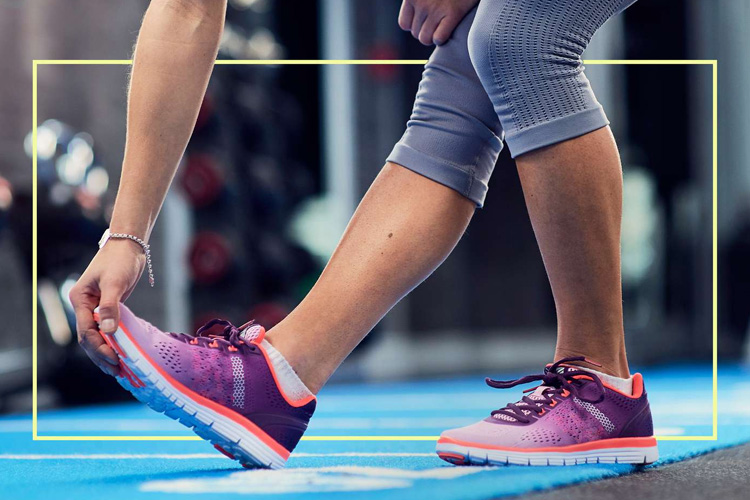 Ш§ЪҜШұ ШІШ§ЩҲЫҢЩҮ ШҜШұ Щ…ЪҶ ЩҫШ§ ШЁШІШұЪҜШӘШұ Ш§ШІ ШІШ§ЩҲЫҢЩҮ Щ„ЪҜЩҶ Ш§ШіШӘШҢ Щ…Щ…Ъ©ЩҶ Ш§ШіШӘ ЩҶШҙШ§ЩҶ ШҜЩҮЩҶШҜЩҮ Ш¶Ш№ЩҒ ЫҢШ§ ШіЩҒШӘ ШҙШҜЩҶ Ш№Ш¶Щ„Ш§ШӘ ШіШ§ЩӮ ЩҫШ§ ШЁШ§ШҙШҜ. ЩҲШұШІШҙвҖҢЩҮШ§ЫҢ Ш®Ш§ШөЫҢ Ъ©ЩҮ Ш§ЫҢЩҶ ЩҶШ§ШӯЫҢЩҮ ШұШ§ ЩҮШҜЩҒ ЩӮШұШ§Шұ Щ…ЫҢвҖҢШҜЩҮЩҶШҜШҢ Щ…Ш§ЩҶЩҶШҜ Ъ©ШҙШҙ ШіШ§ЩӮ ЩҫШ§ ЫҢШ§ ШӘЩӮЩҲЫҢШӘ ШӘЫҢШЁЫҢШ§Щ„ЫҢШі ЩӮШҜШ§Щ…ЫҢШҢ Щ…Щ…Ъ©ЩҶ Ш§ШіШӘ Ъ©Щ…Ъ© Ъ©ЩҶЩҶШҜ.
Ш§ЪҜШұ ШІШ§ЩҲЫҢЩҮ ШҜШұ Щ…ЪҶ ЩҫШ§ ШЁШІШұЪҜШӘШұ Ш§ШІ ШІШ§ЩҲЫҢЩҮ Щ„ЪҜЩҶ Ш§ШіШӘШҢ Щ…Щ…Ъ©ЩҶ Ш§ШіШӘ ЩҶШҙШ§ЩҶ ШҜЩҮЩҶШҜЩҮ Ш¶Ш№ЩҒ ЫҢШ§ ШіЩҒШӘ ШҙШҜЩҶ Ш№Ш¶Щ„Ш§ШӘ ШіШ§ЩӮ ЩҫШ§ ШЁШ§ШҙШҜ. ЩҲШұШІШҙвҖҢЩҮШ§ЫҢ Ш®Ш§ШөЫҢ Ъ©ЩҮ Ш§ЫҢЩҶ ЩҶШ§ШӯЫҢЩҮ ШұШ§ ЩҮШҜЩҒ ЩӮШұШ§Шұ Щ…ЫҢвҖҢШҜЩҮЩҶШҜШҢ Щ…Ш§ЩҶЩҶШҜ Ъ©ШҙШҙ ШіШ§ЩӮ ЩҫШ§ ЫҢШ§ ШӘЩӮЩҲЫҢШӘ ШӘЫҢШЁЫҢШ§Щ„ЫҢШі ЩӮШҜШ§Щ…ЫҢШҢ Щ…Щ…Ъ©ЩҶ Ш§ШіШӘ Ъ©Щ…Ъ© Ъ©ЩҶЩҶШҜ.
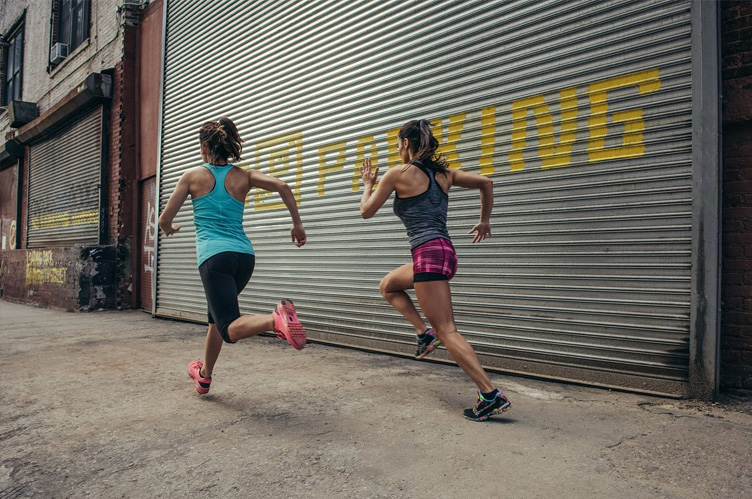




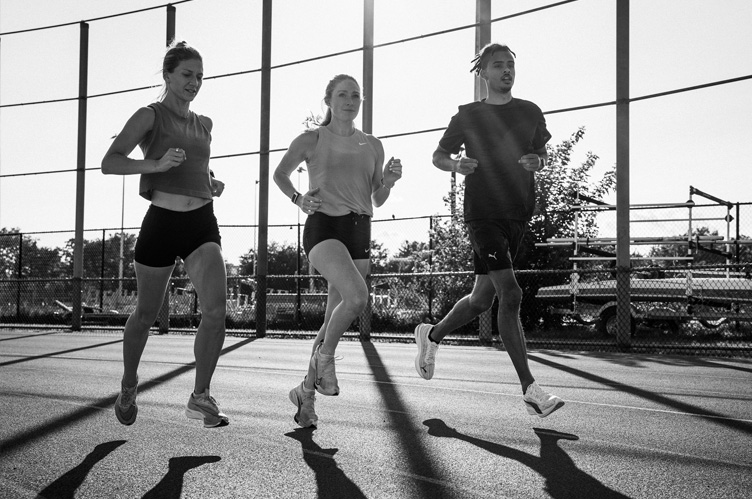 .
.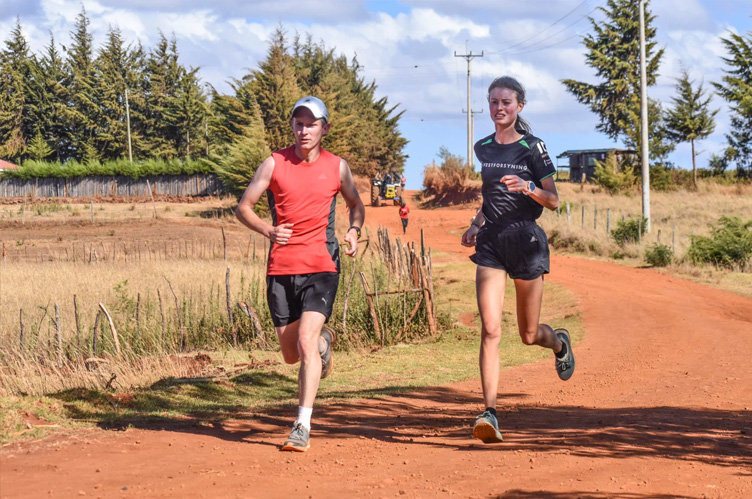
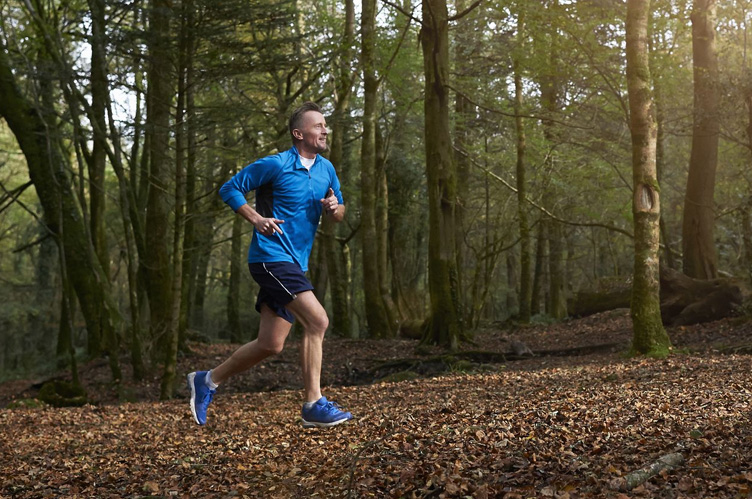



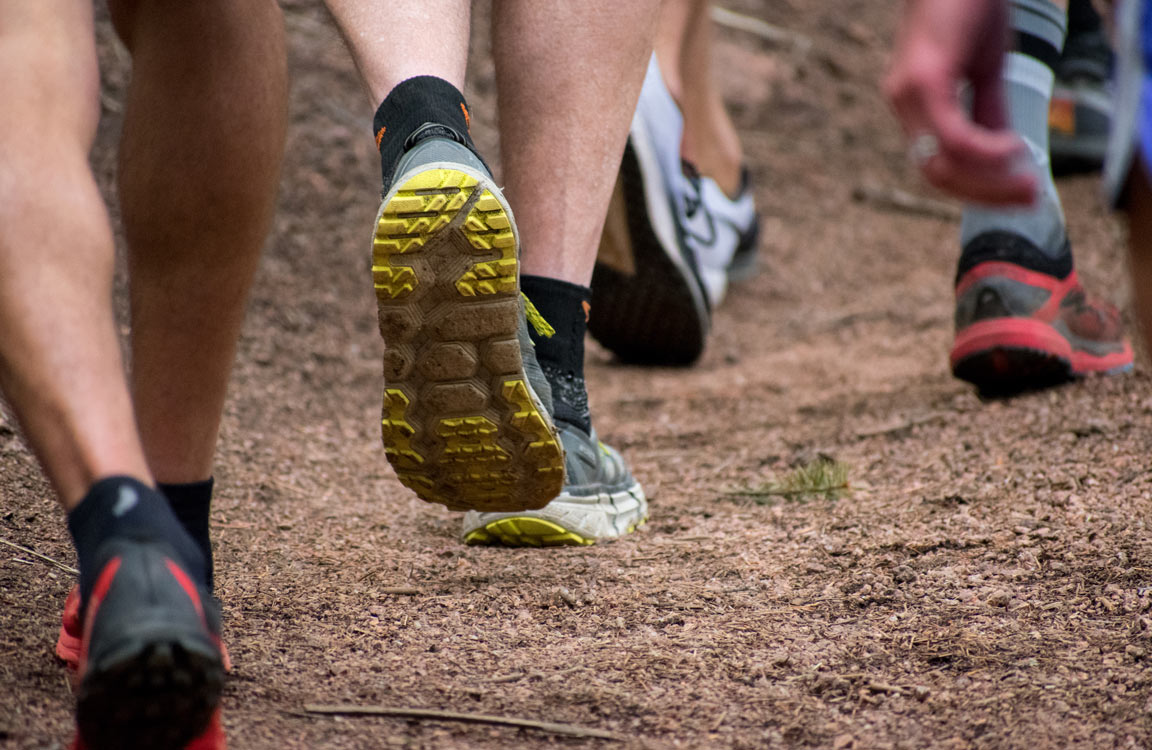

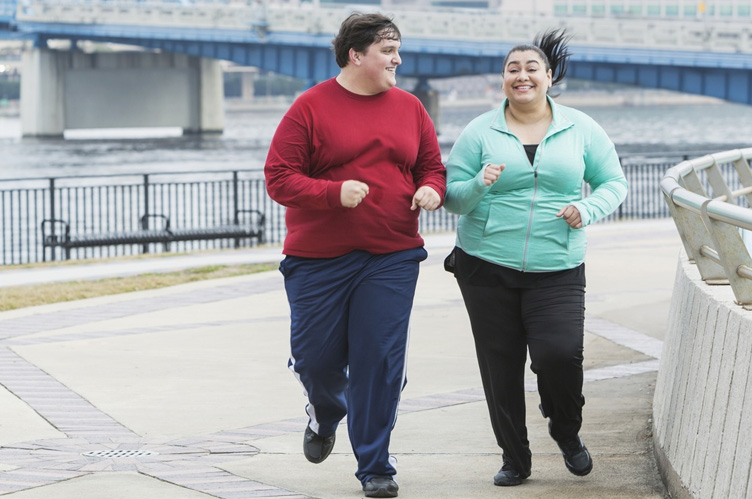
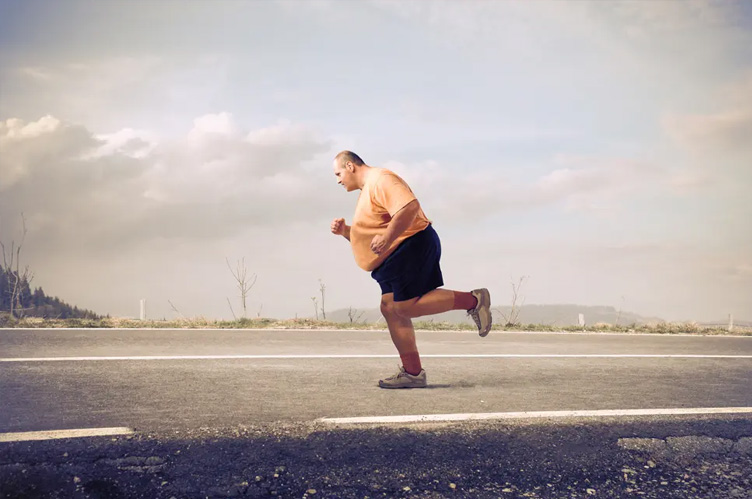


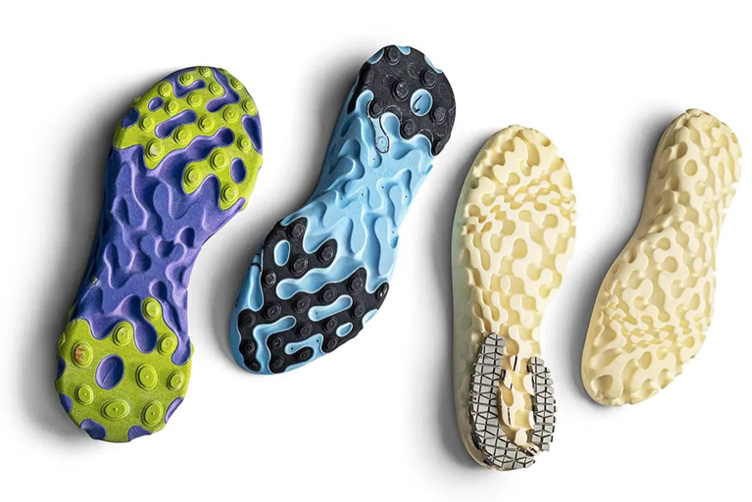
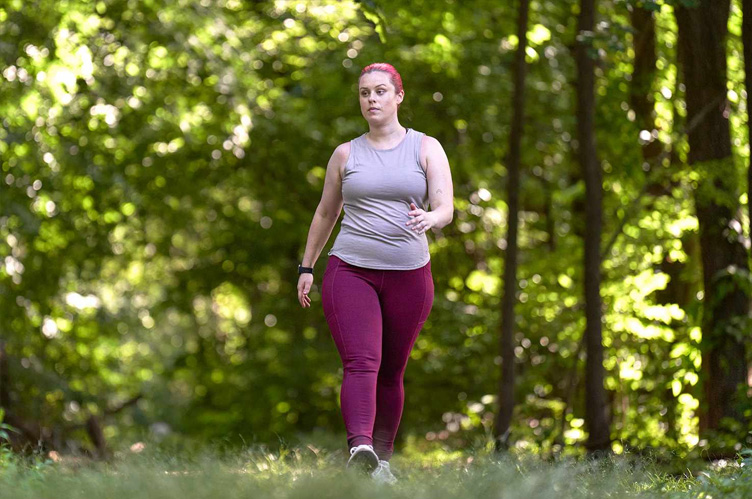
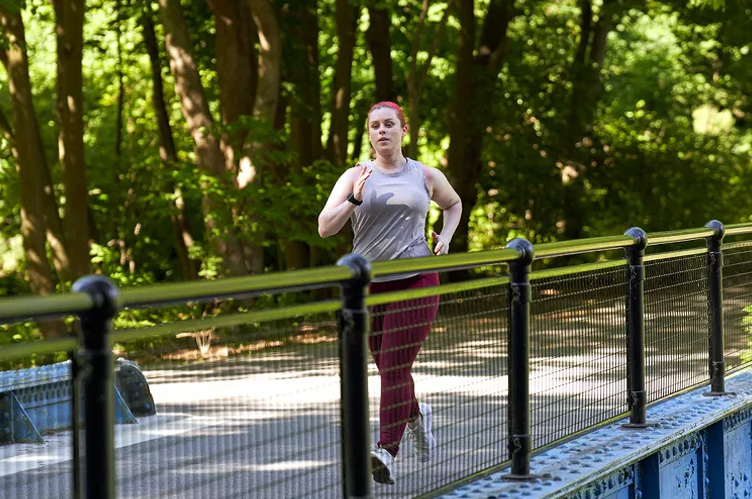 As your 1-minute run intervals become easier, you can increase the number of your run intervals and decrease the length of your walk intervals.
As your 1-minute run intervals become easier, you can increase the number of your run intervals and decrease the length of your walk intervals.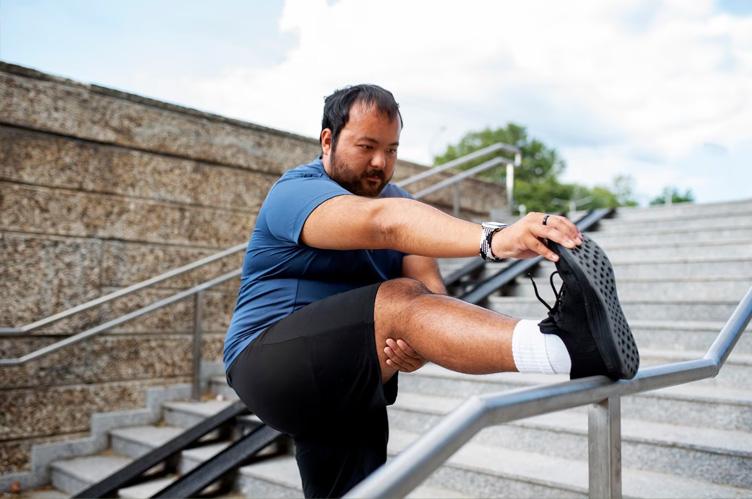
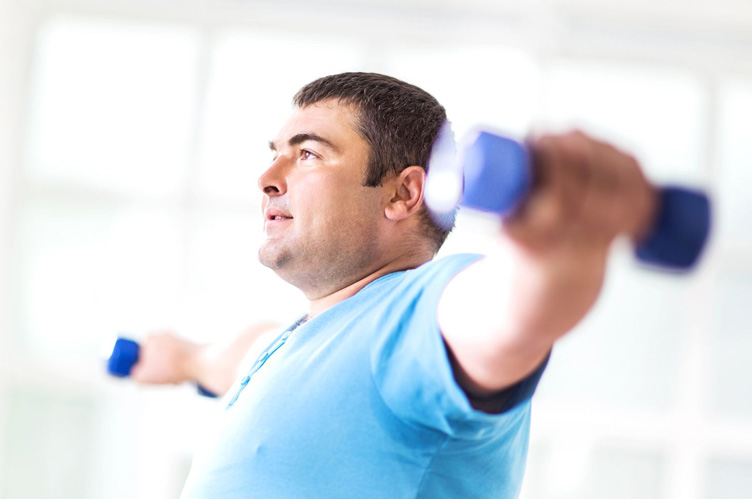
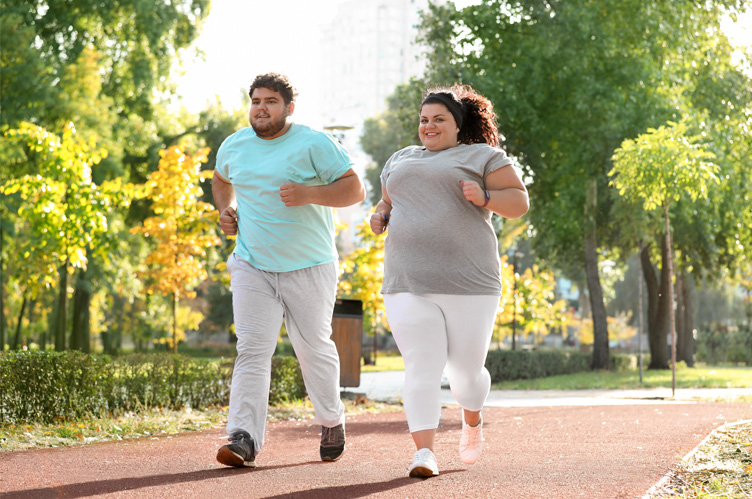



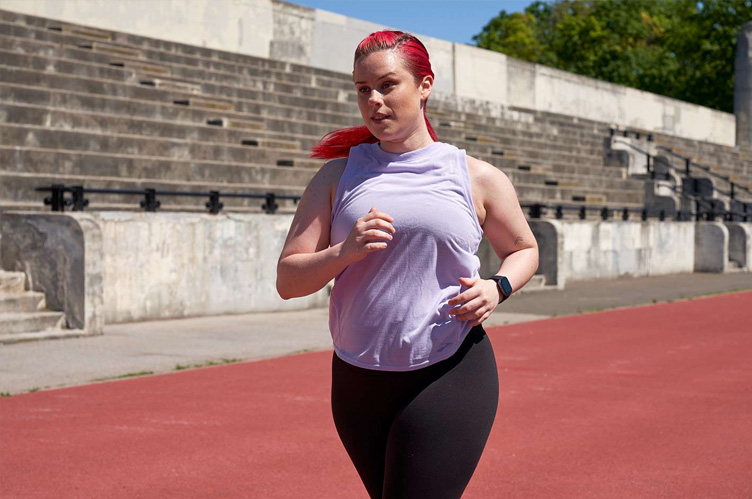 Rhythmic breathing is another approach that can help. Rather than simply trying to inhale as much air as you can with each breath, time your breathing in rhythm with your steps. Inhale for three steps, then exhale for two.
Rhythmic breathing is another approach that can help. Rather than simply trying to inhale as much air as you can with each breath, time your breathing in rhythm with your steps. Inhale for three steps, then exhale for two.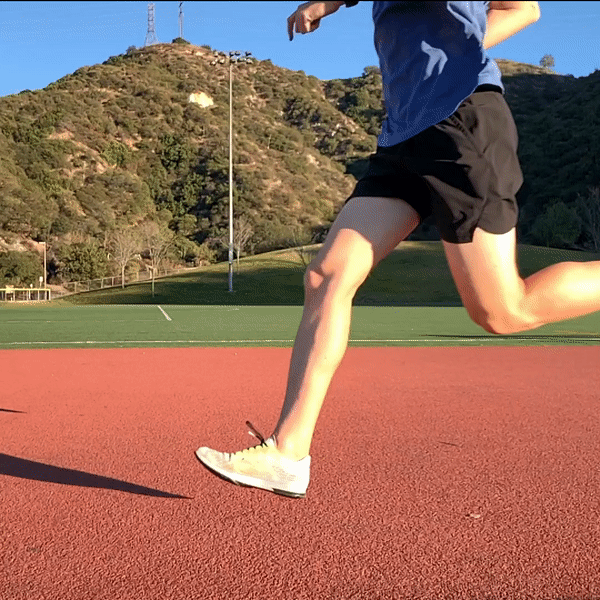
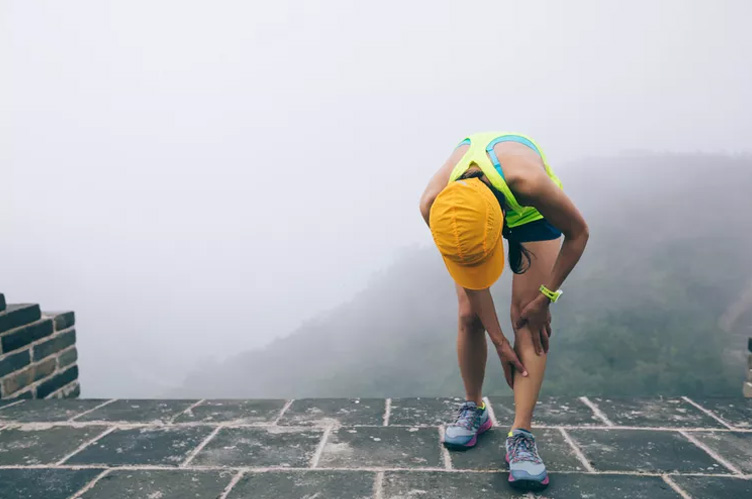 Treatment usually involves home remedies including rest and ice compresses.
Shin splints - self-care. U.S. National Library of Medicine. U.S. Department of Health and Human Services. 2018.
Analyzing your shoes and gate may help prevent shin splints in the future, as can these tips:
Treatment usually involves home remedies including rest and ice compresses.
Shin splints - self-care. U.S. National Library of Medicine. U.S. Department of Health and Human Services. 2018.
Analyzing your shoes and gate may help prevent shin splints in the future, as can these tips: The most common remedy for runnerвҖҷs knee is rest and ice. You can also help prevent pain by sticking to a training schedule that is appropriate for your fitness level.
The most common remedy for runnerвҖҷs knee is rest and ice. You can also help prevent pain by sticking to a training schedule that is appropriate for your fitness level.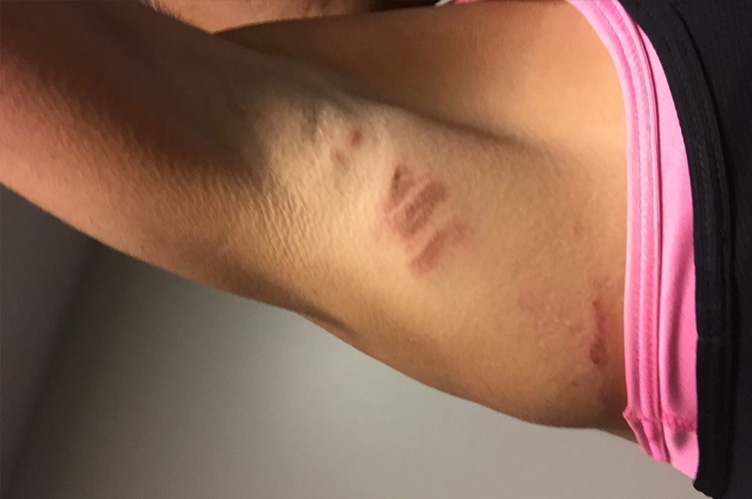 Chafing can lead to rashes and raw skin, which is uncomfortable both during and after your run.
Chafing can lead to rashes and raw skin, which is uncomfortable both during and after your run.